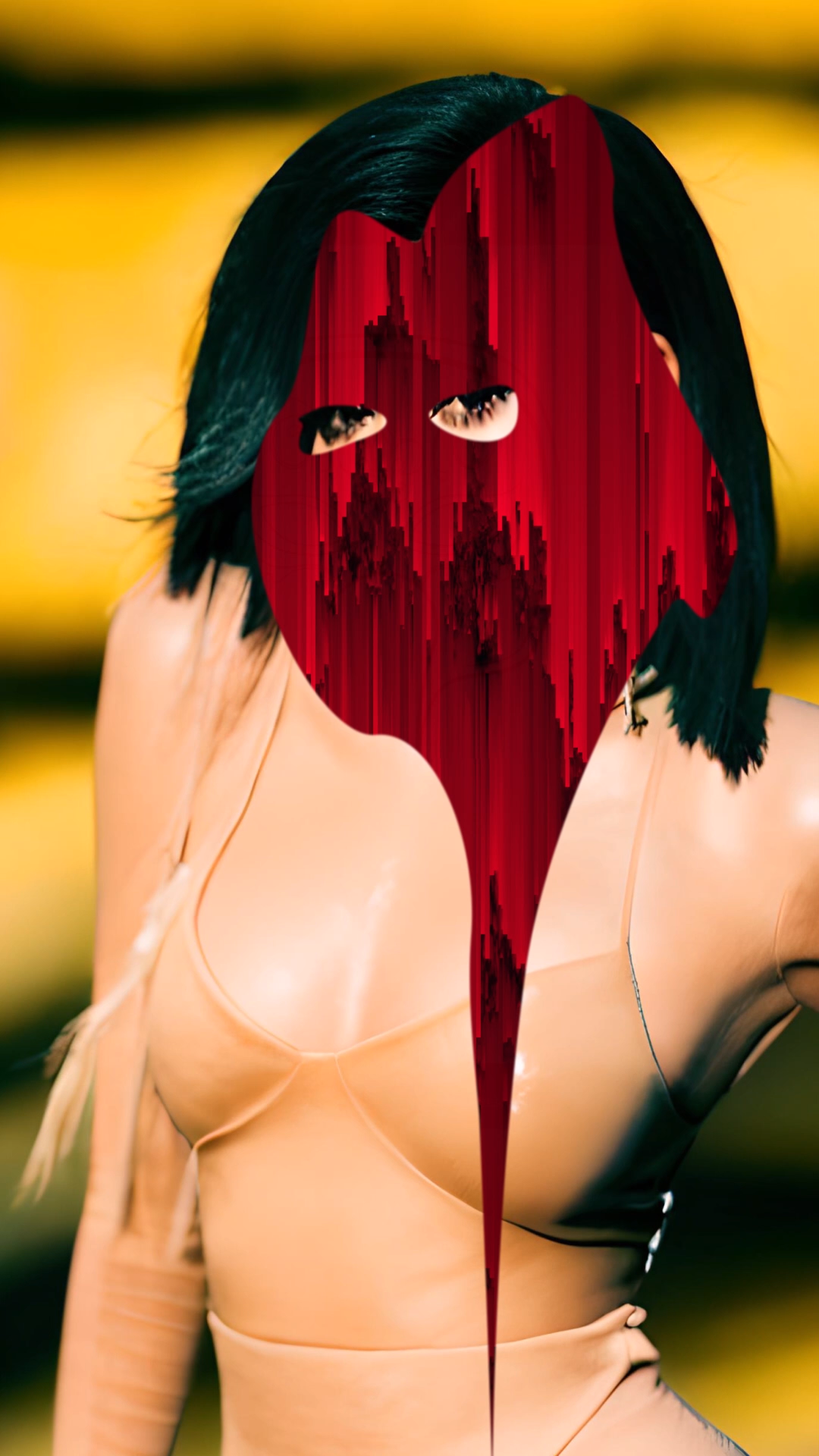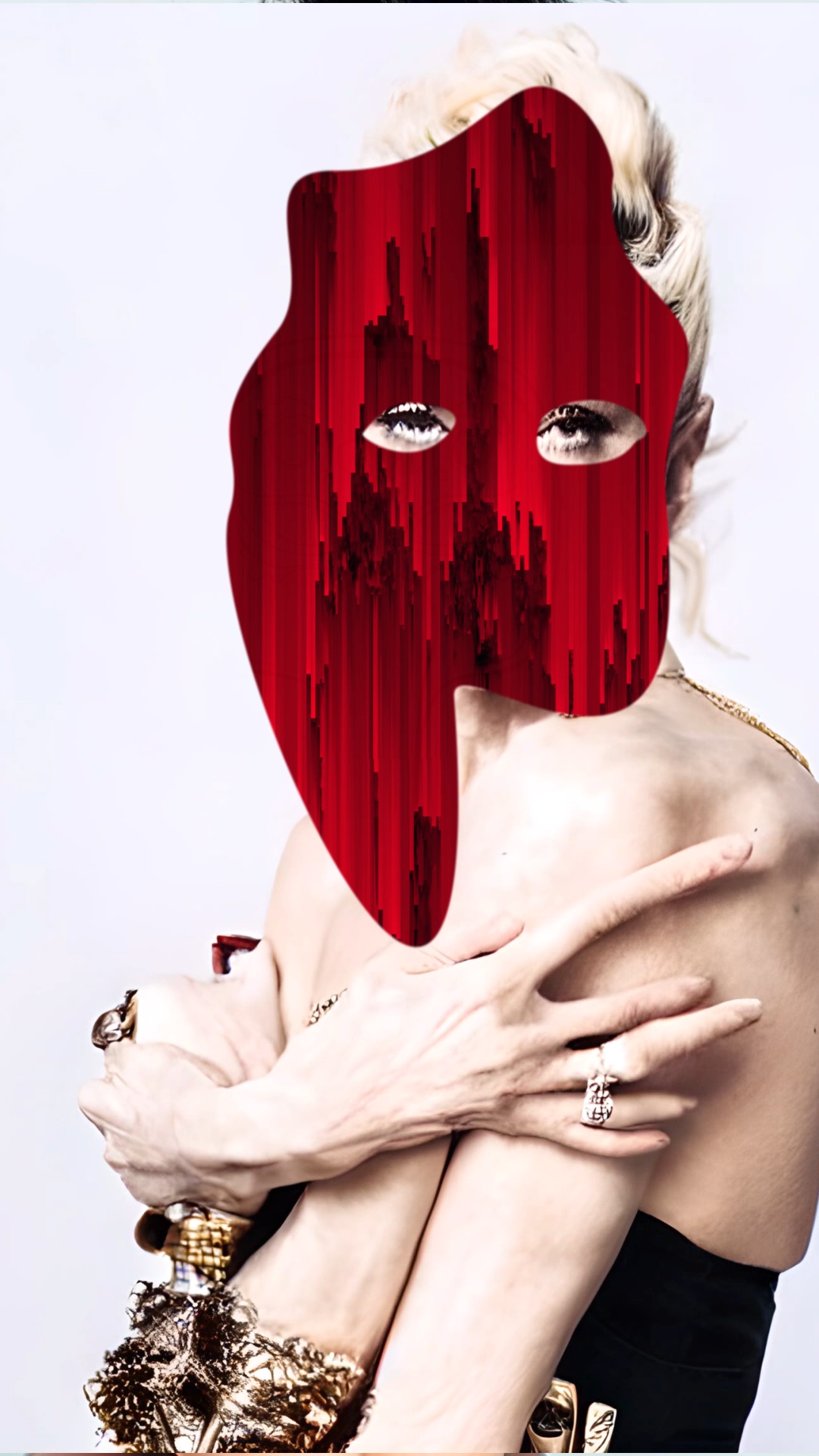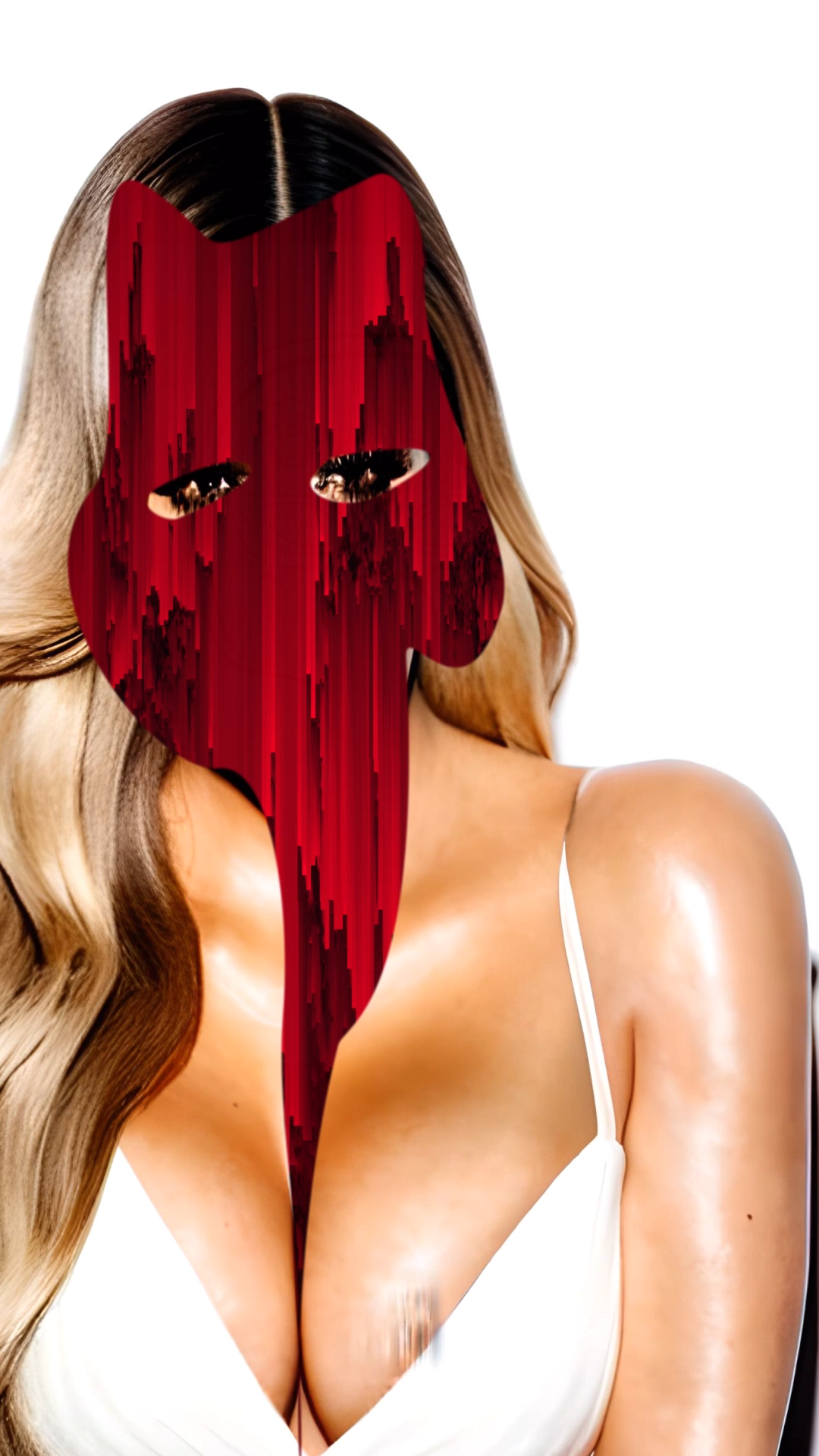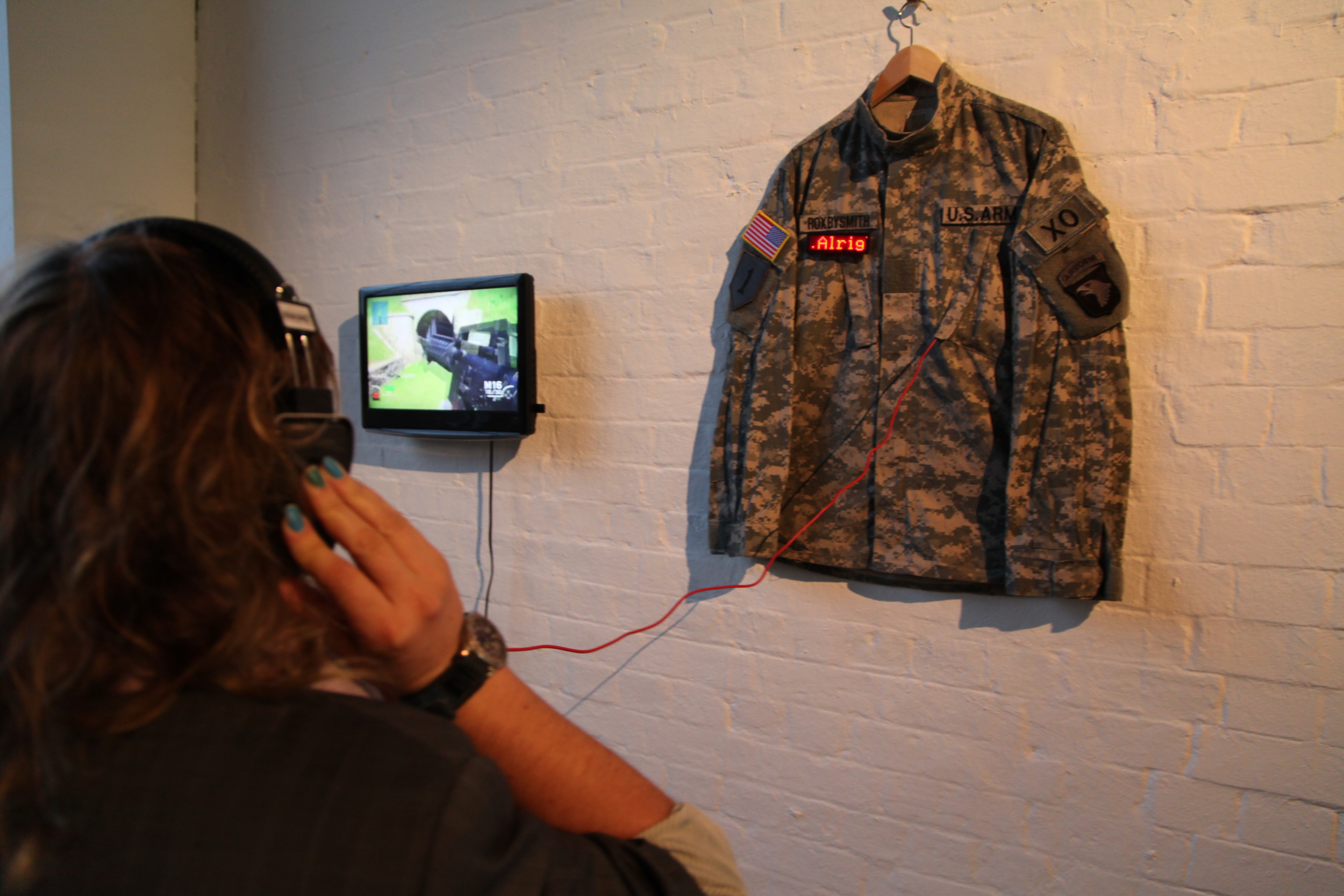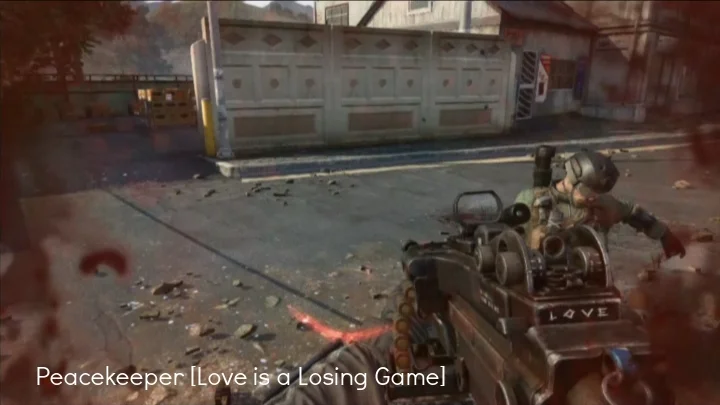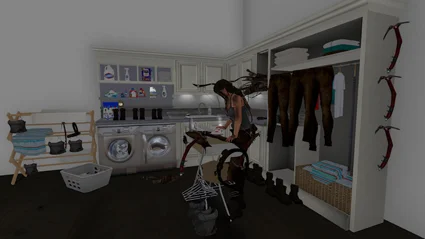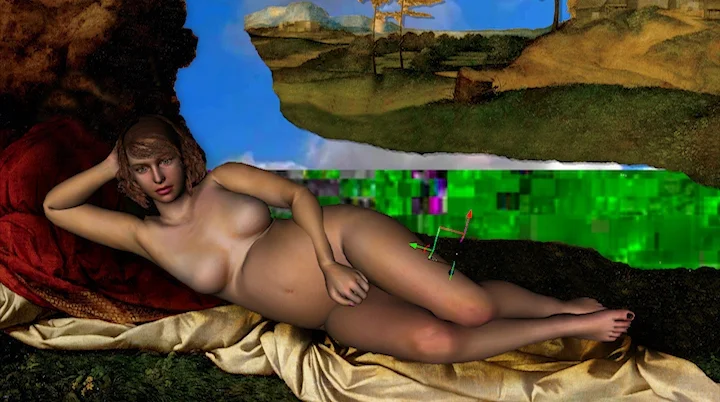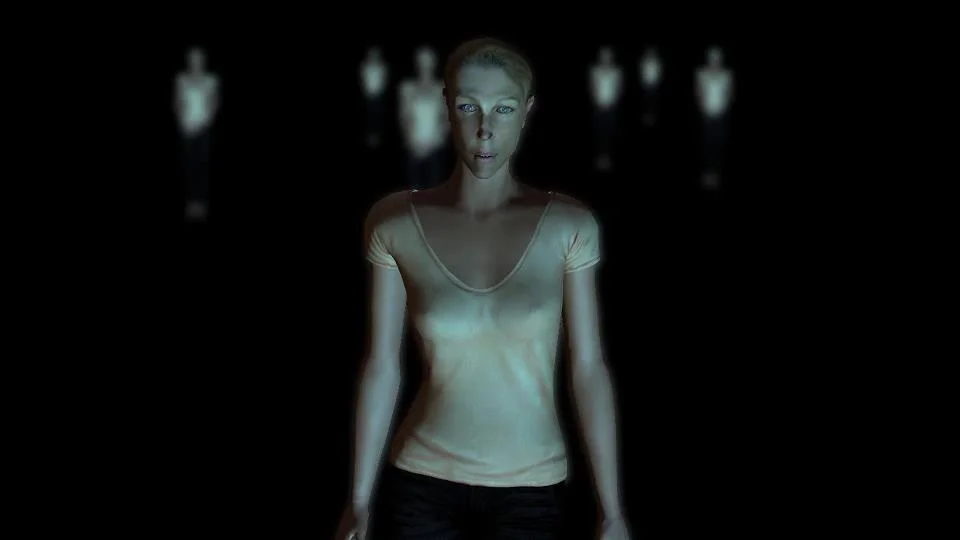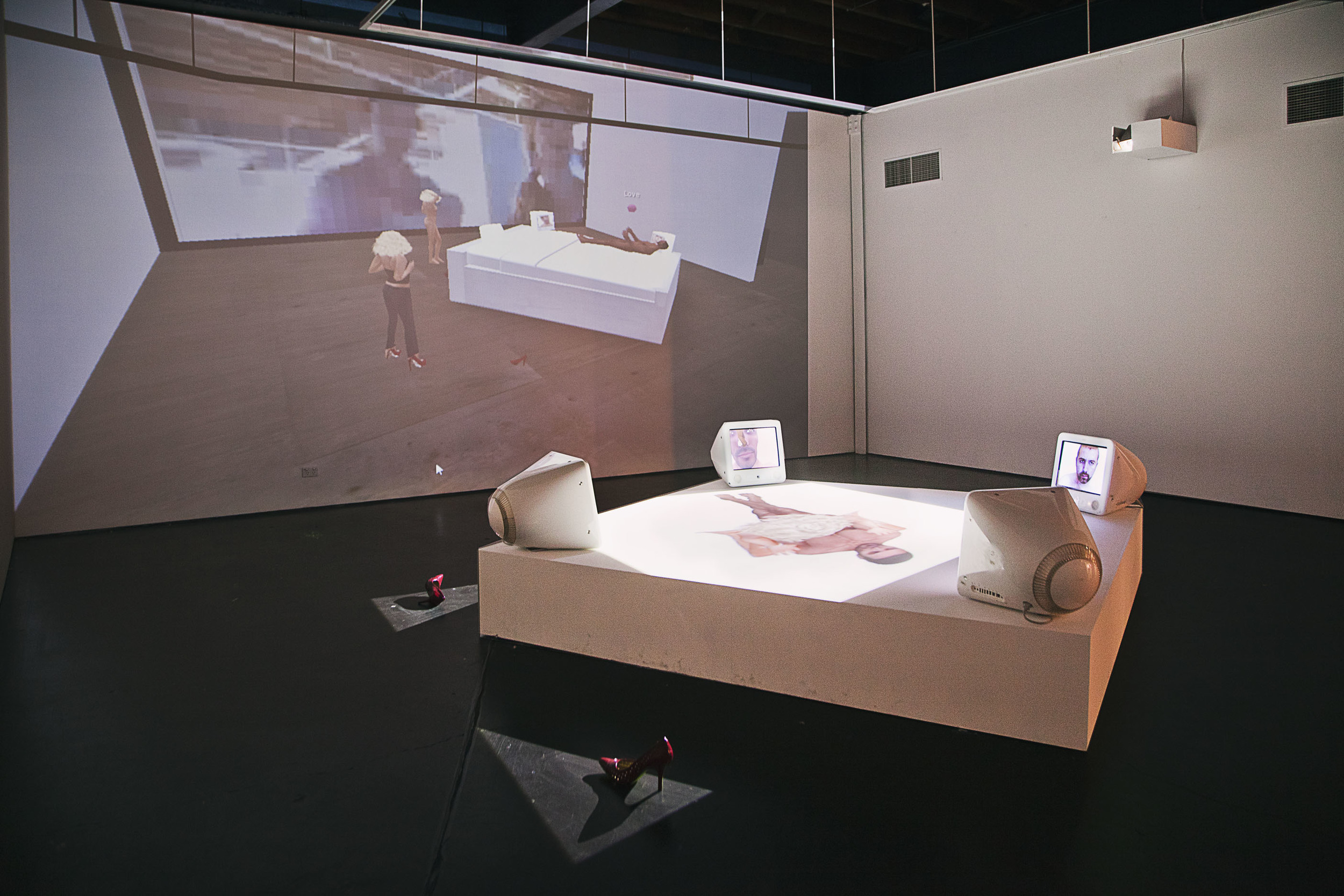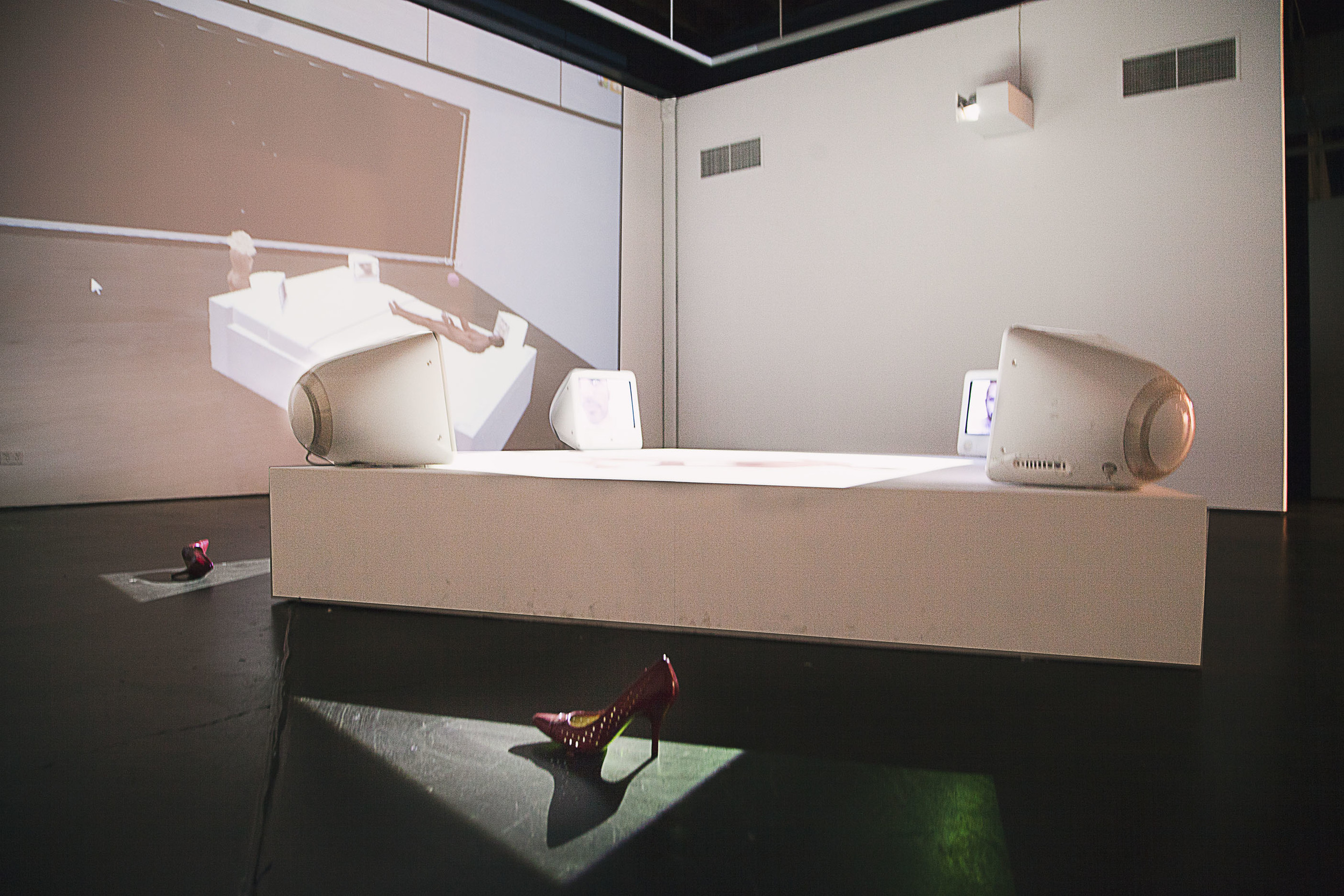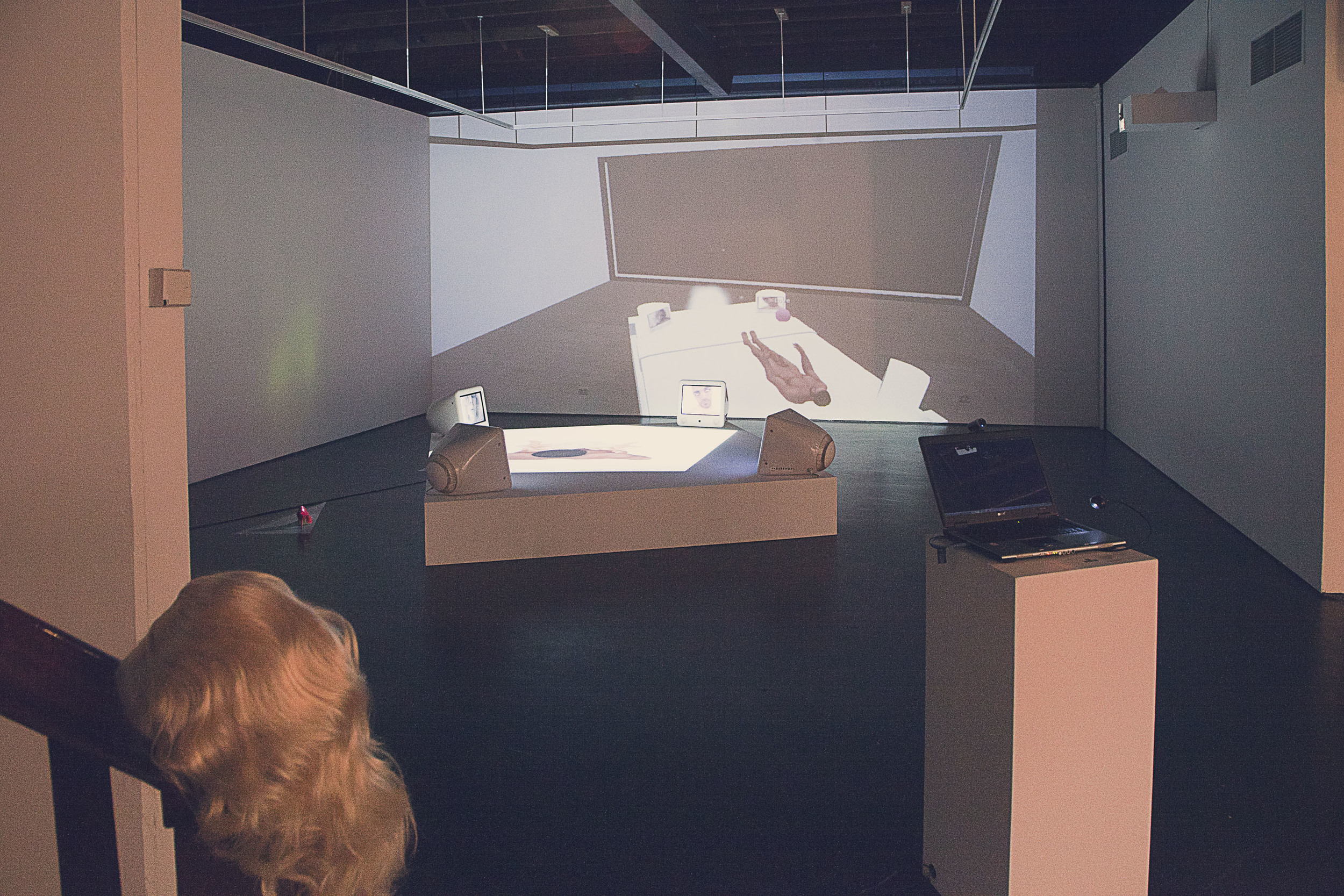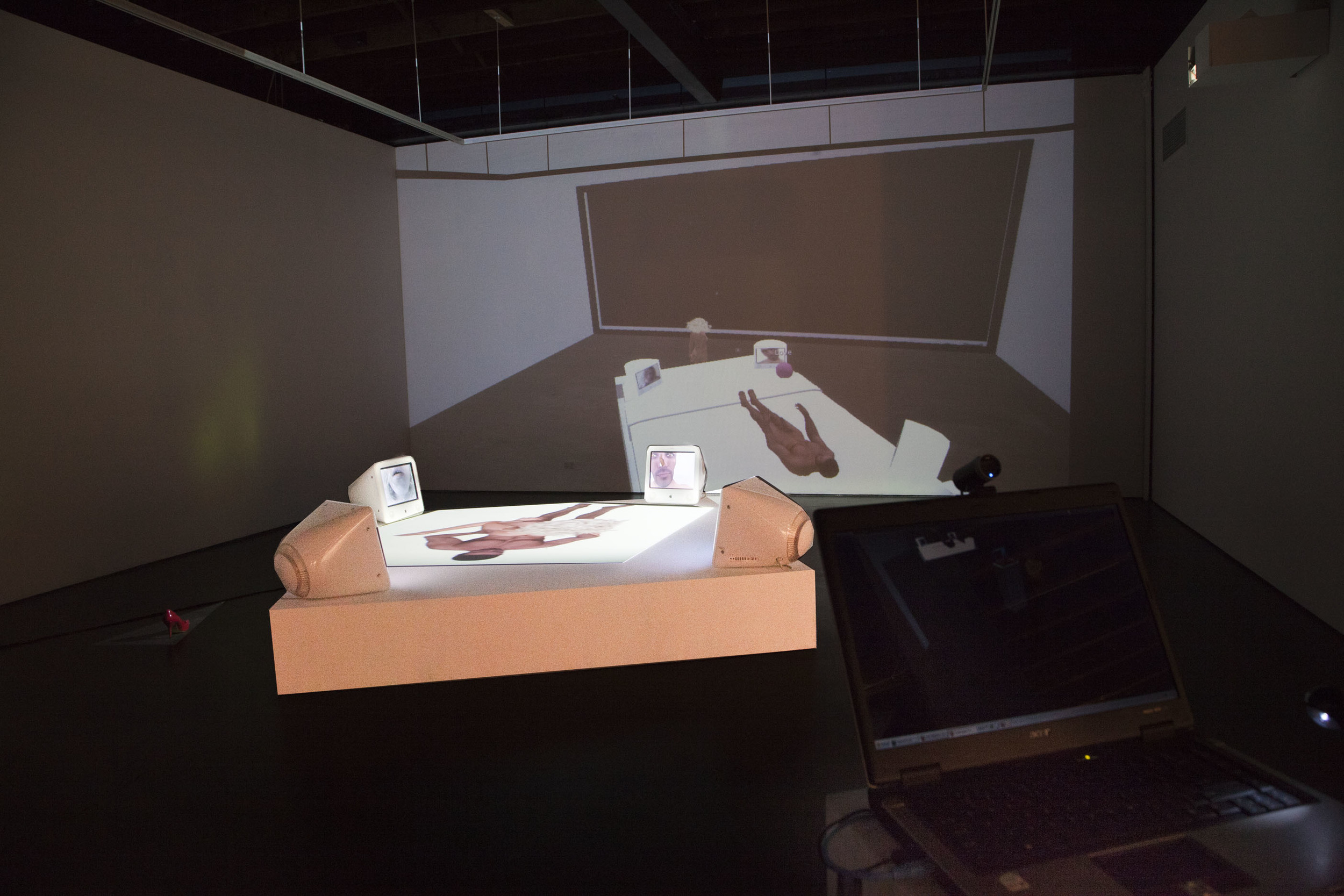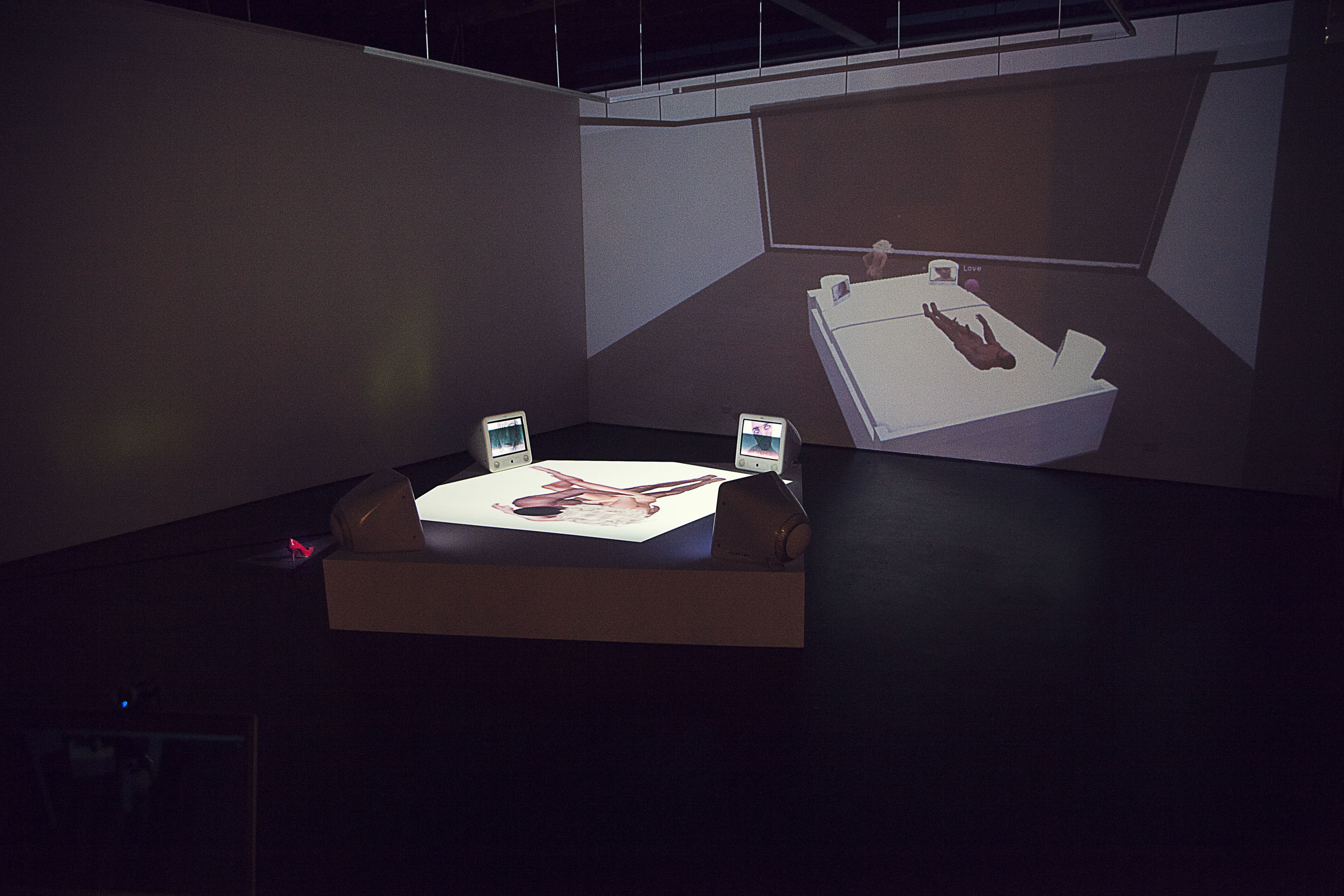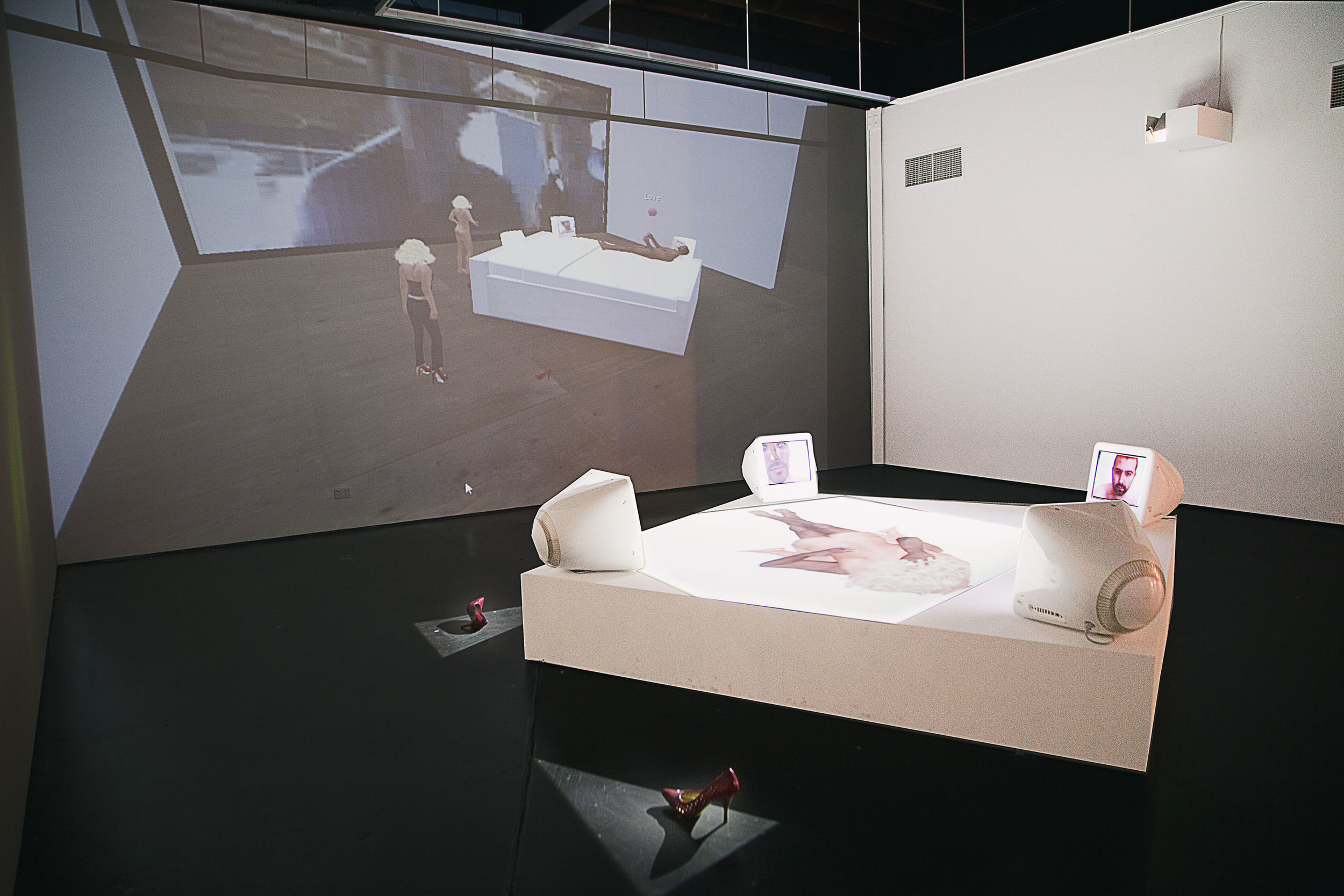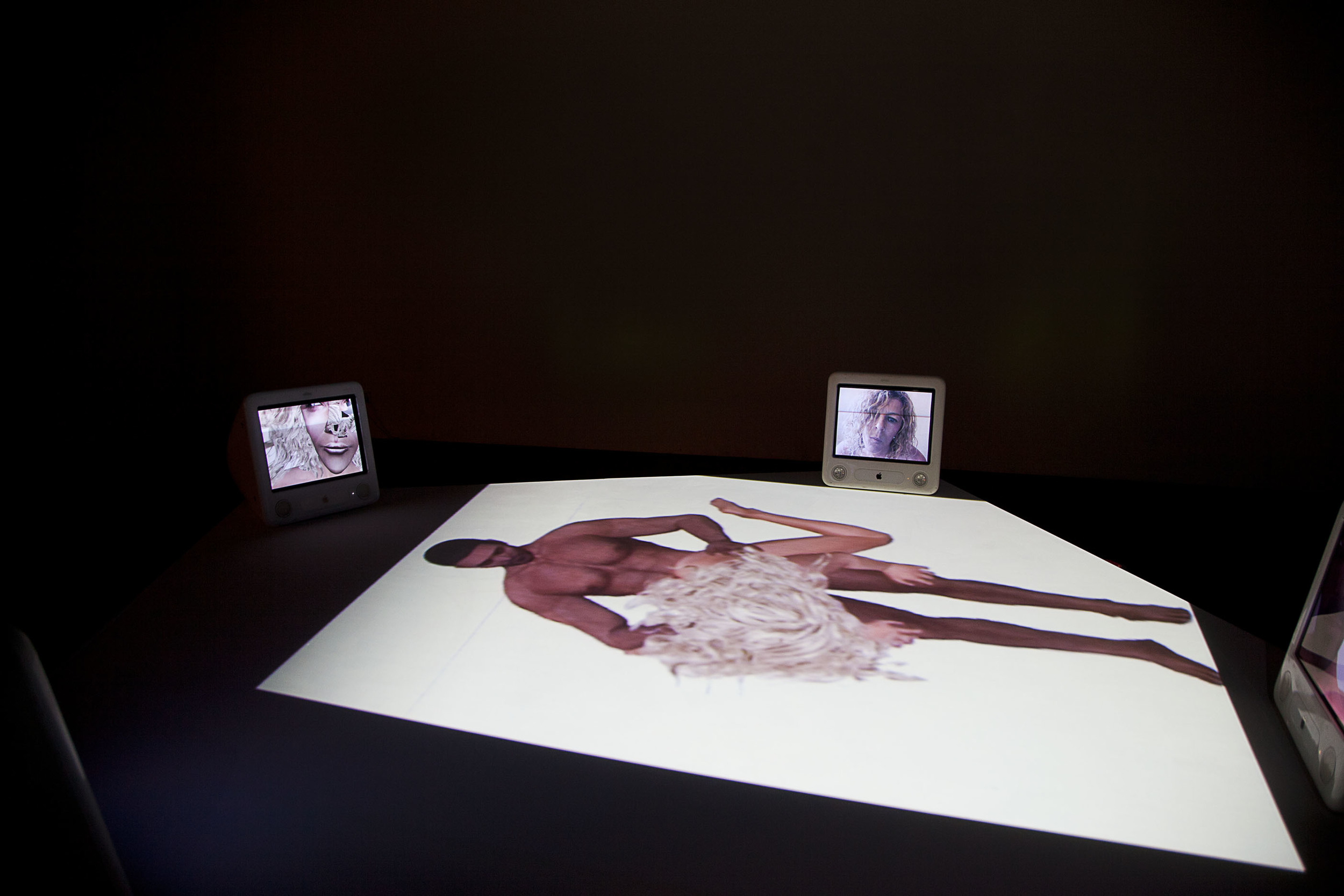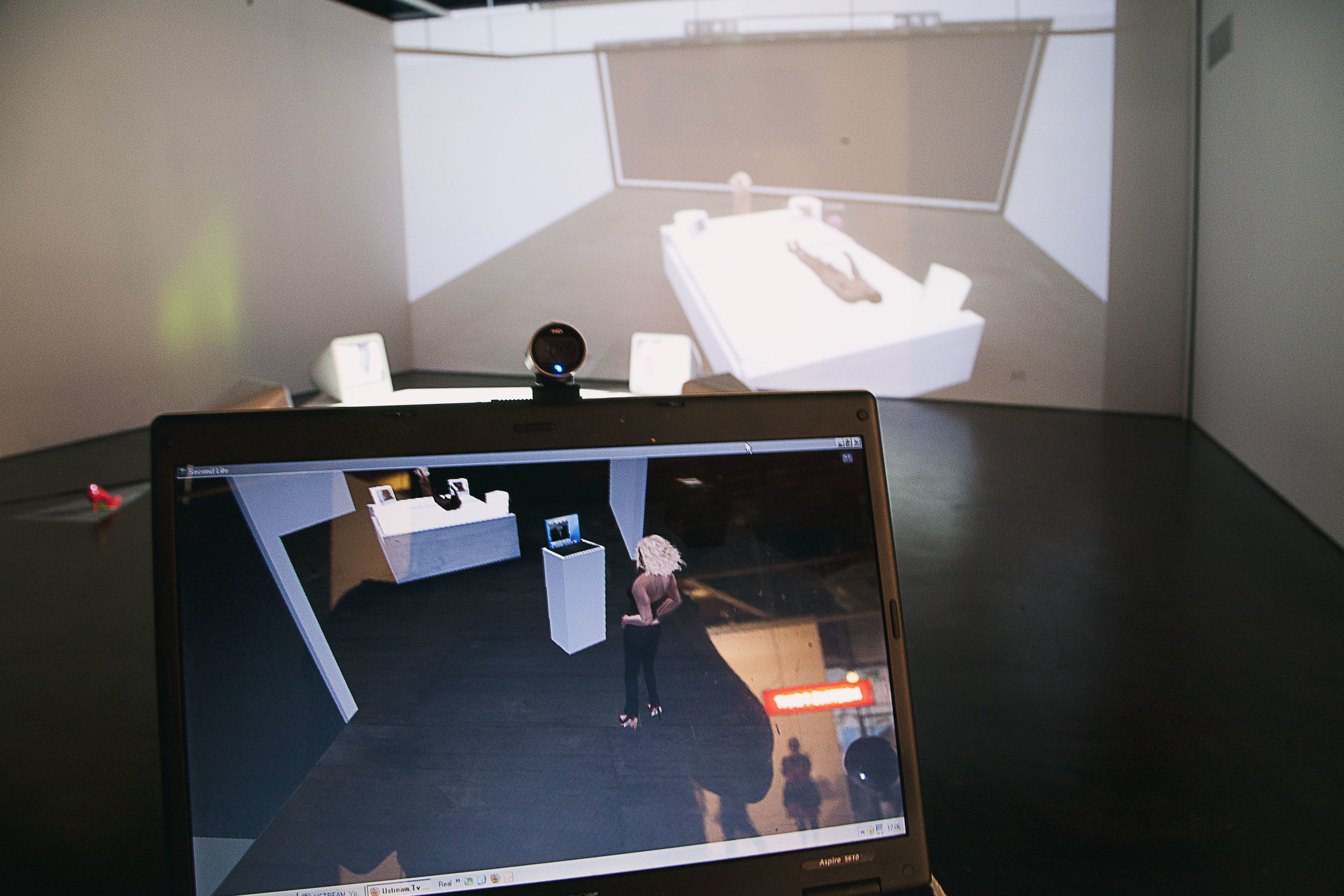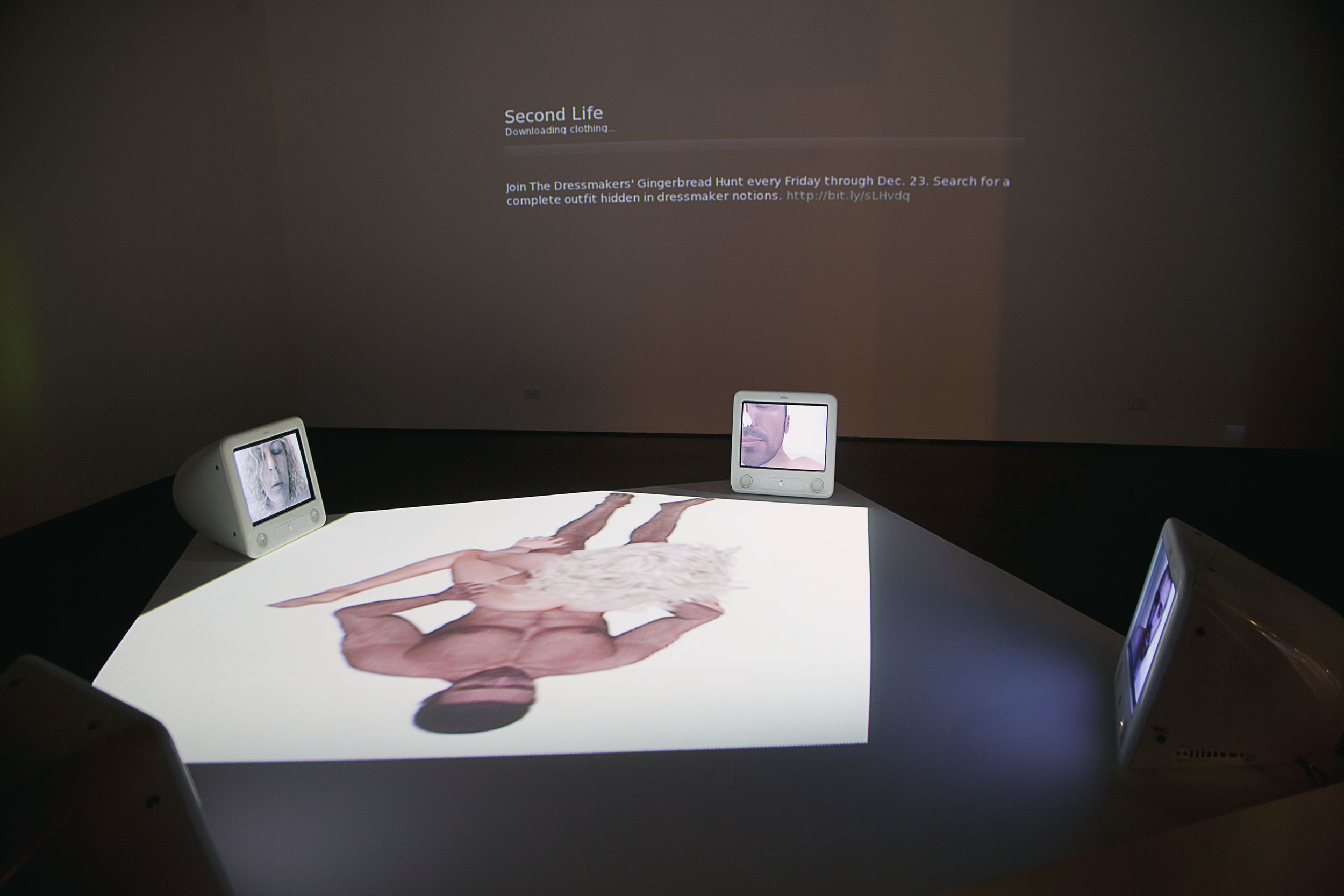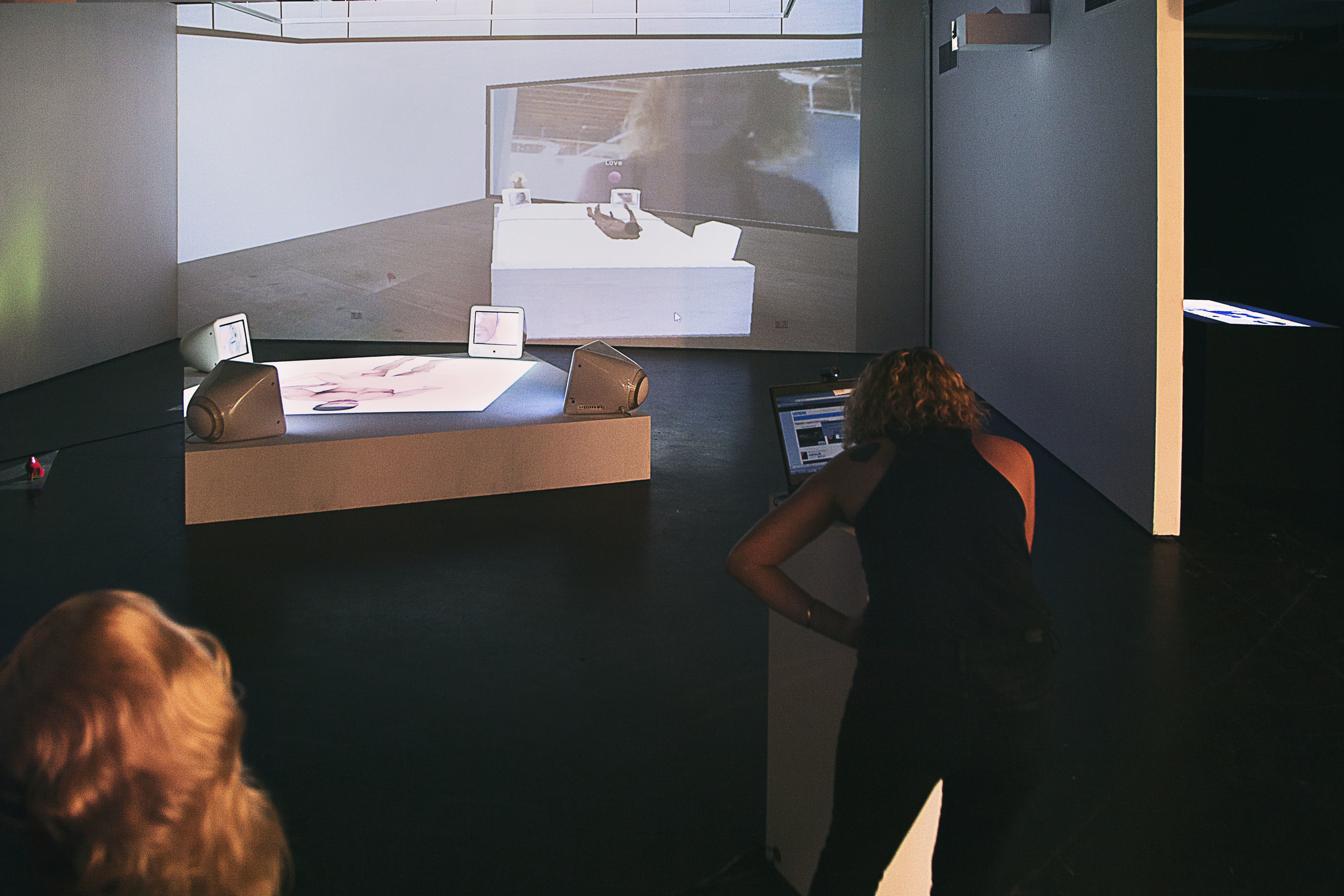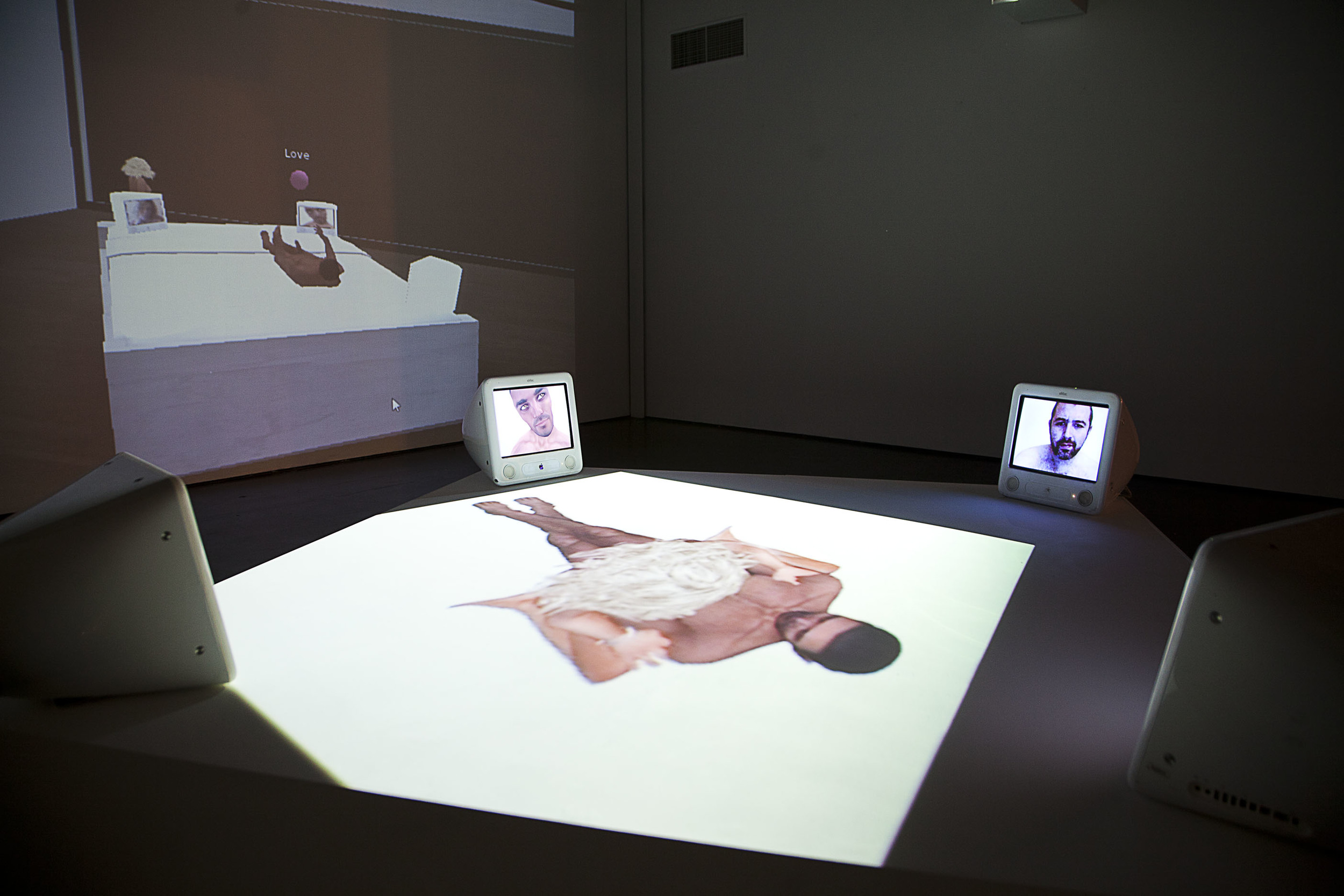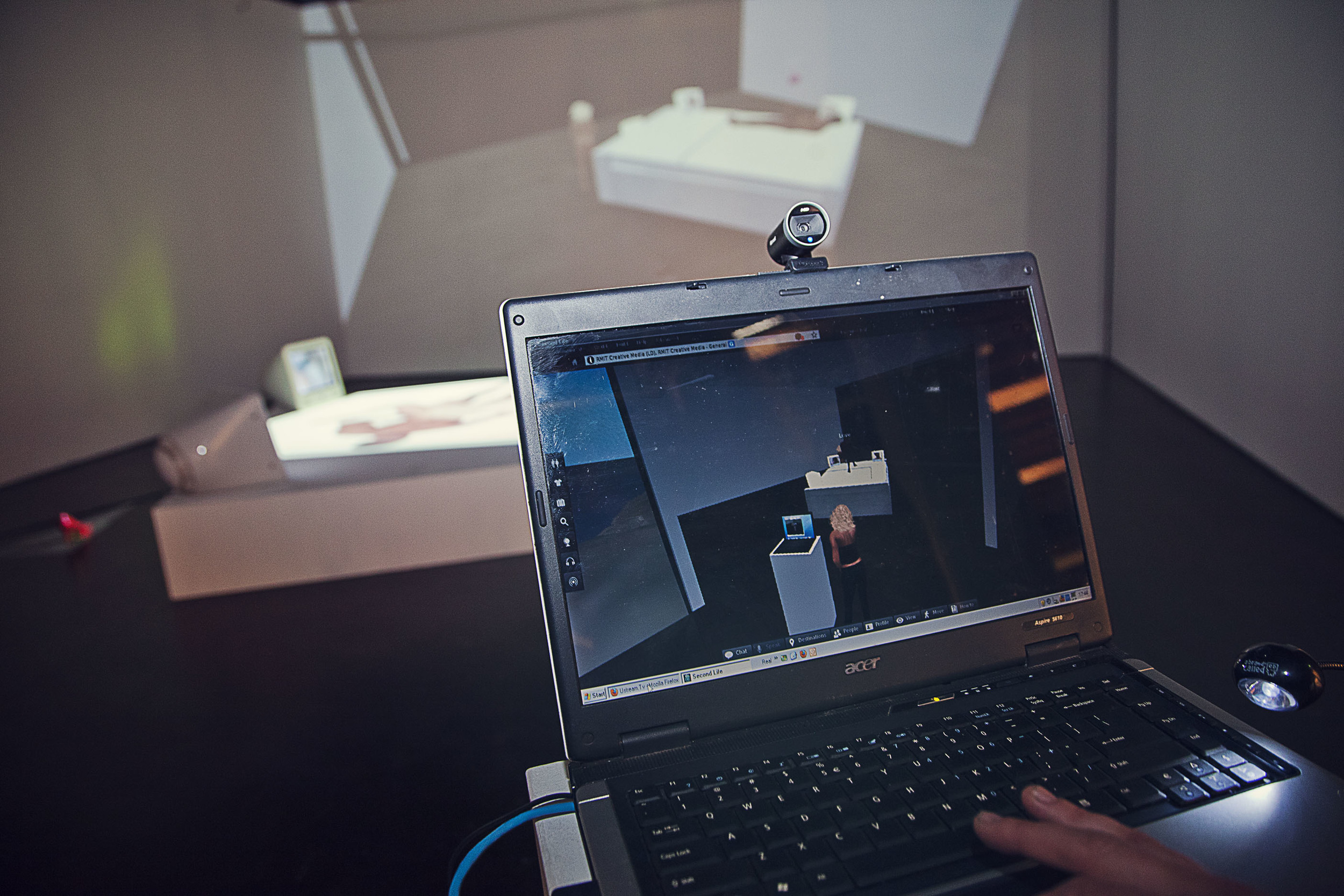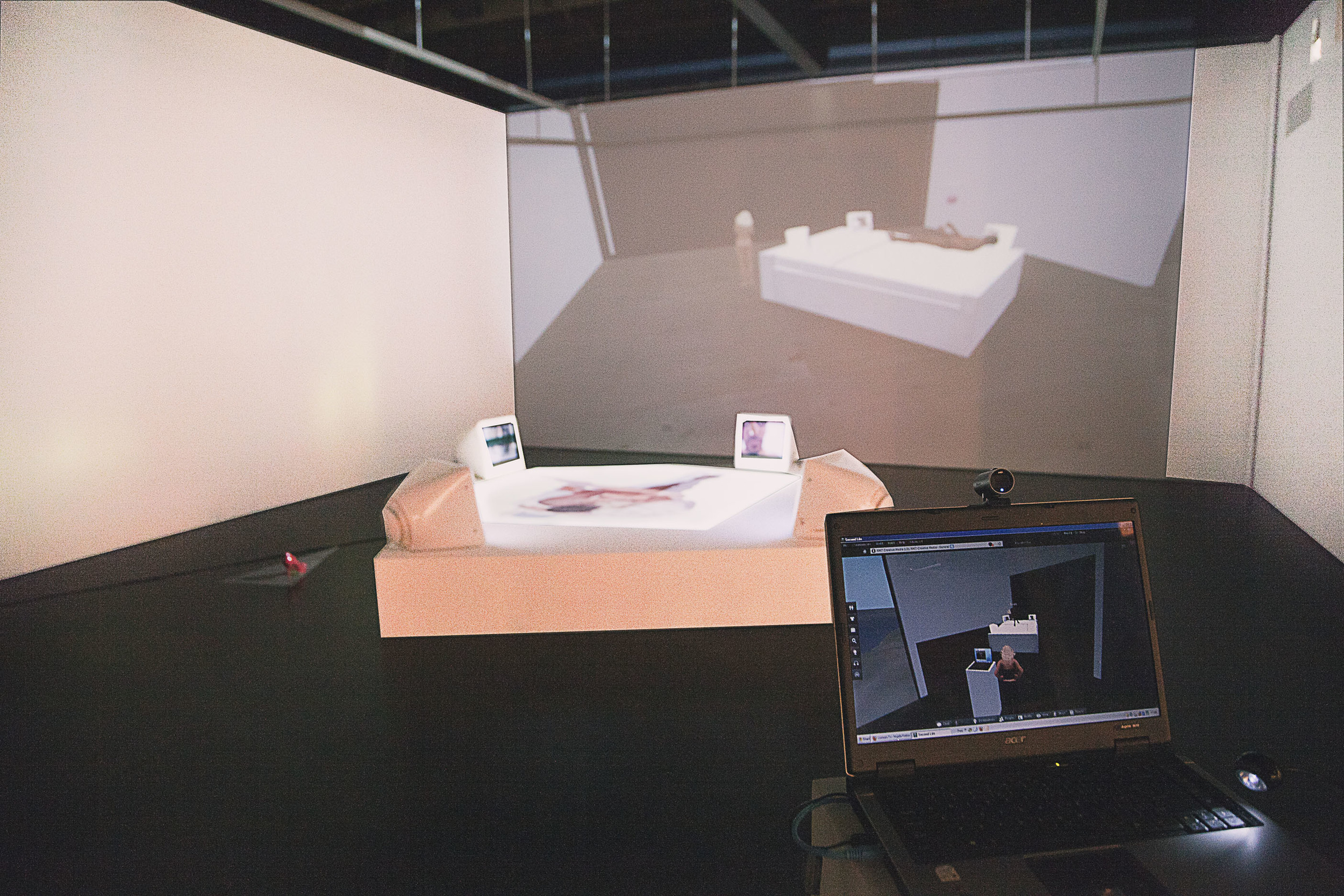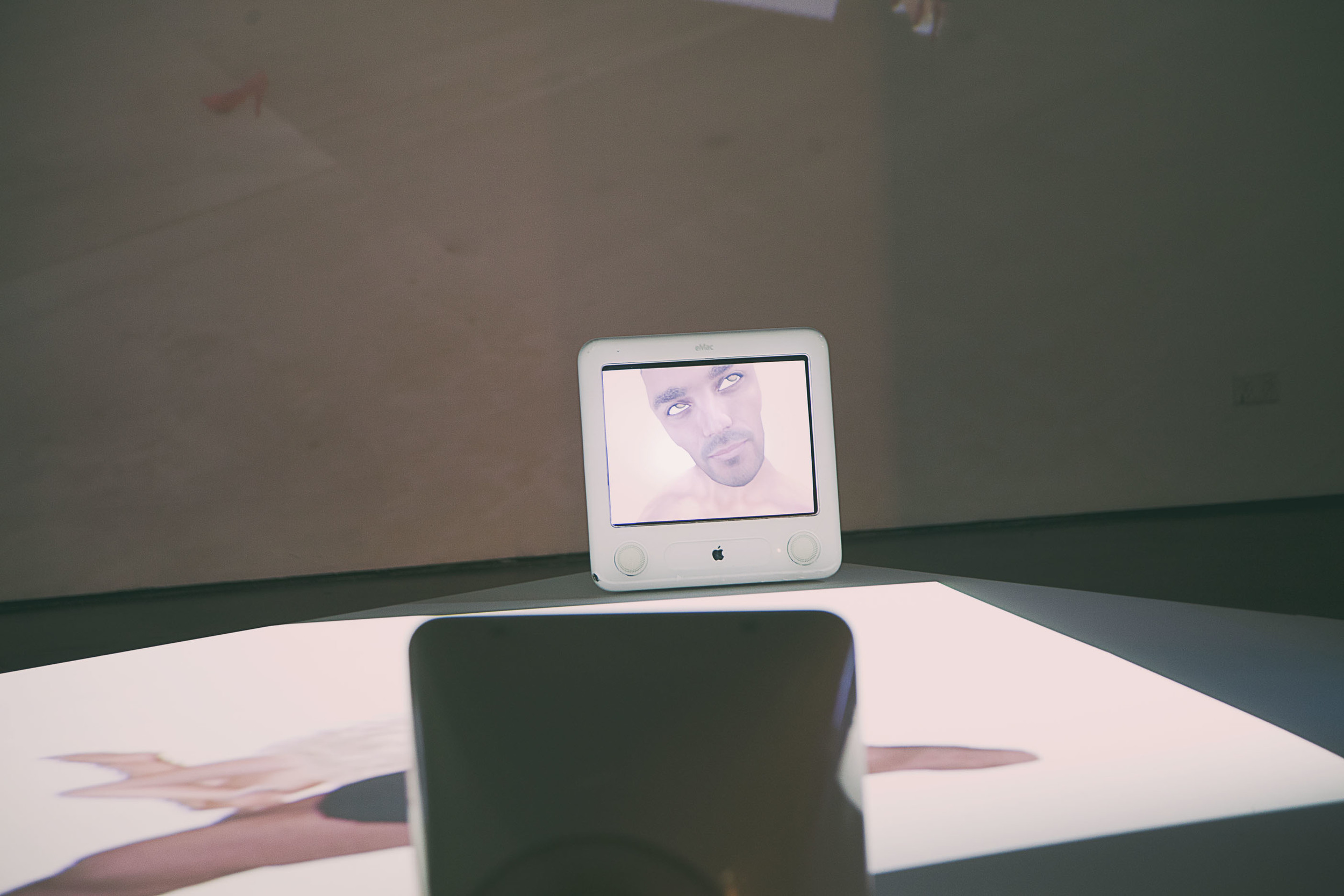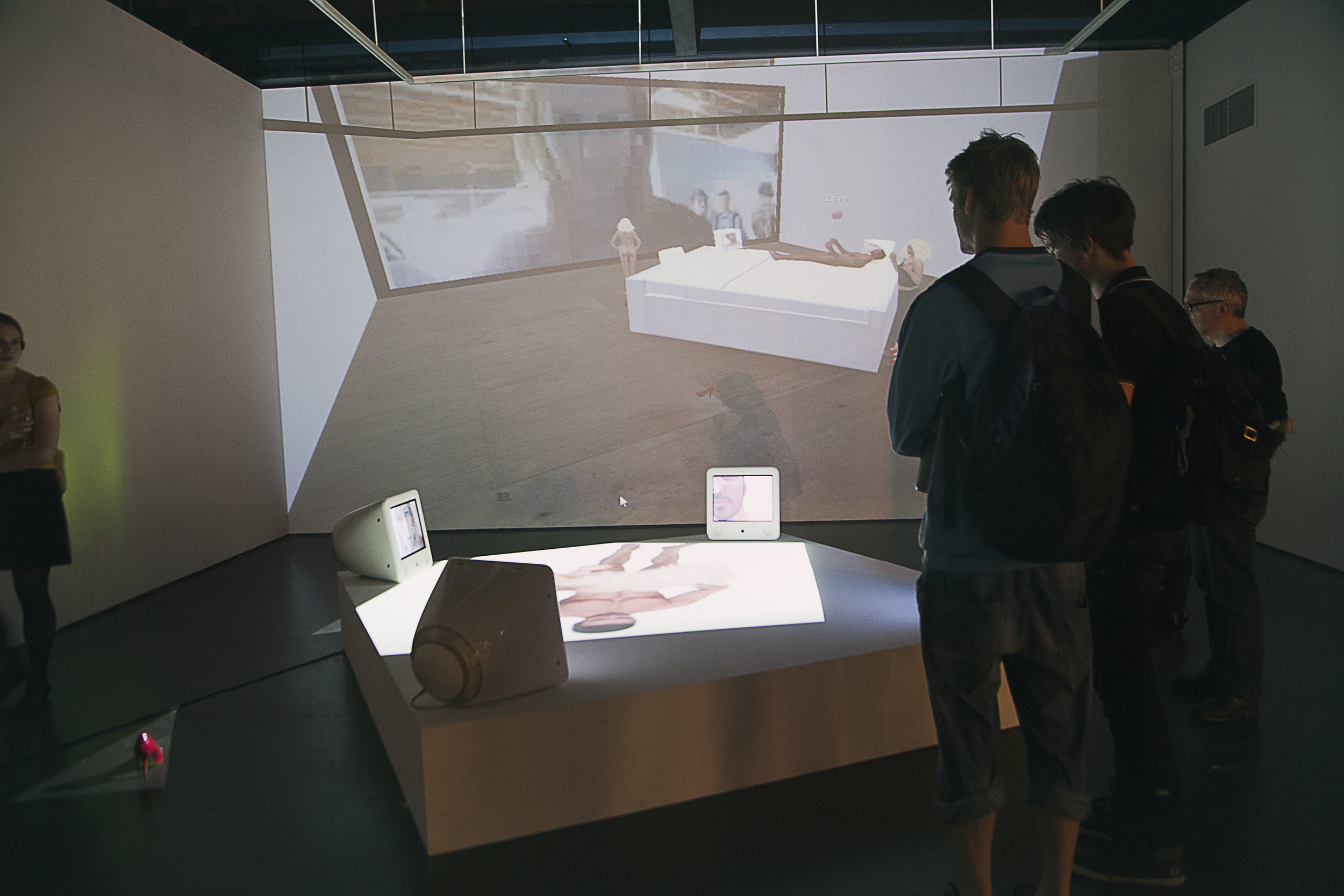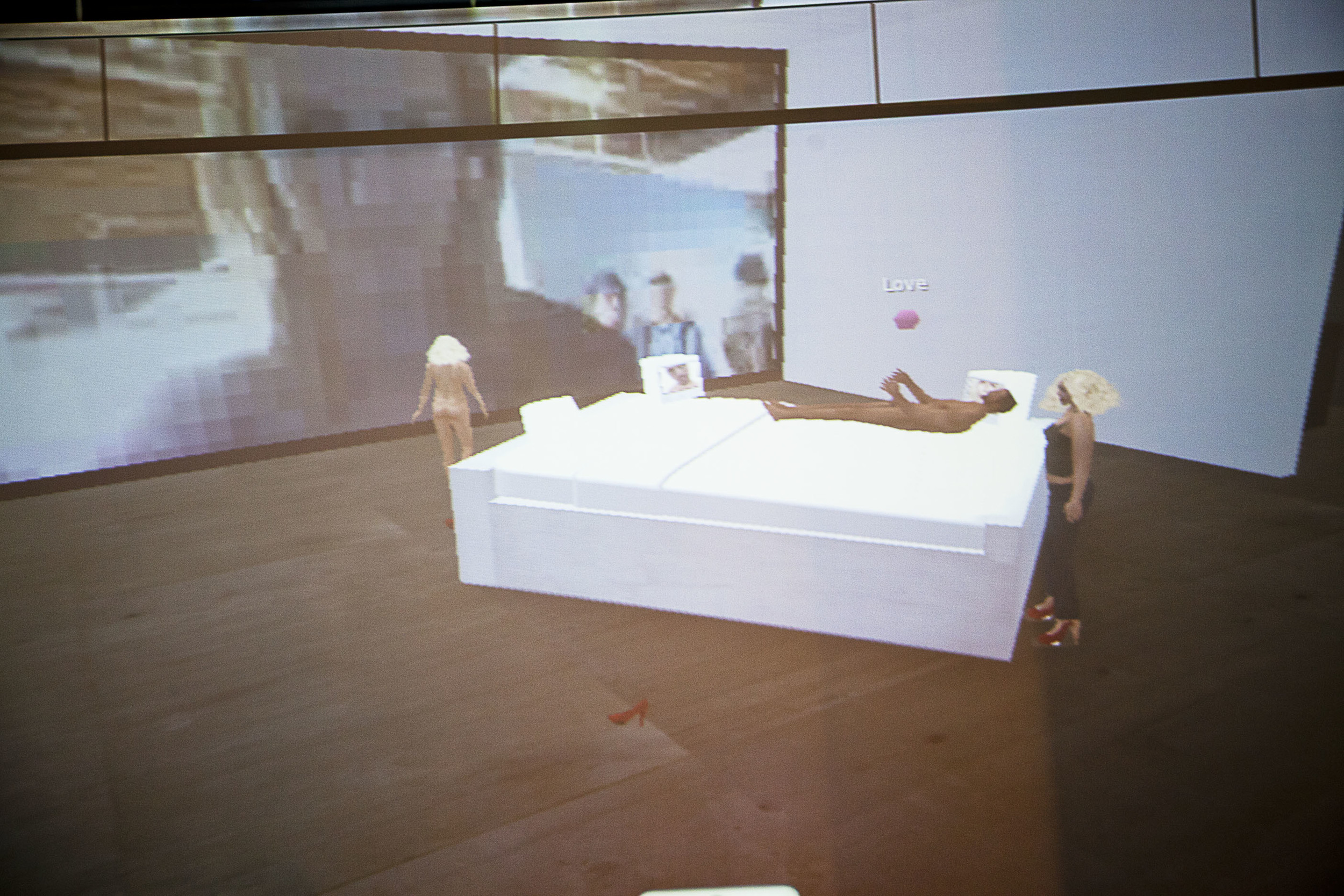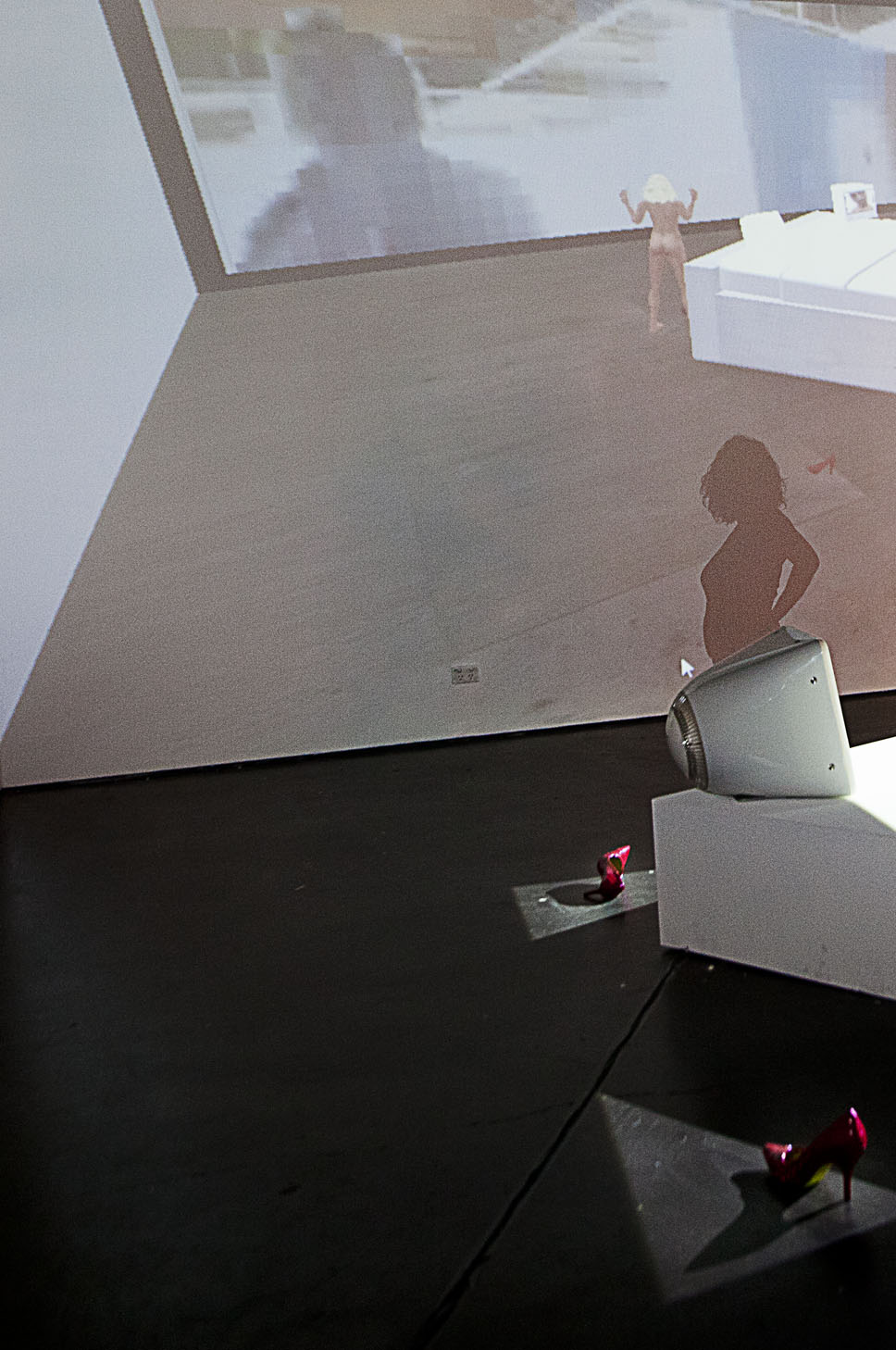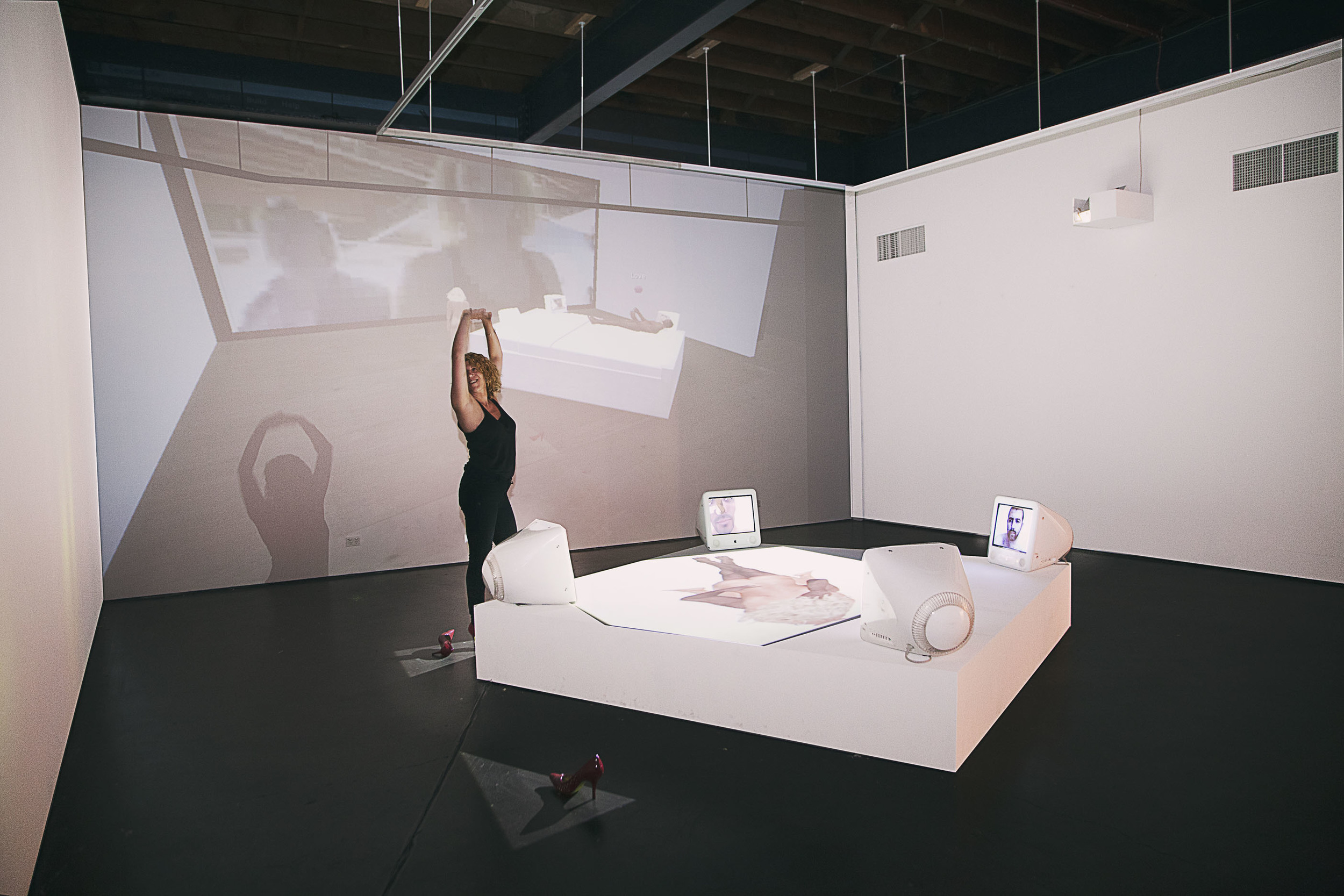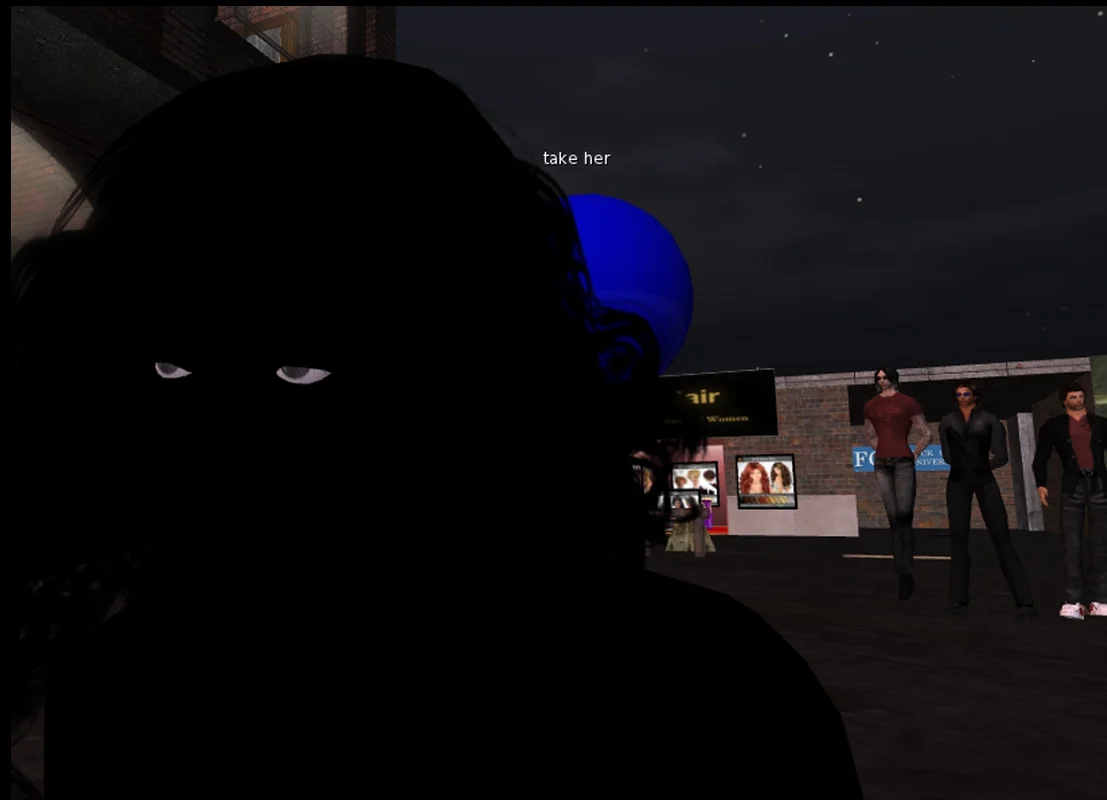JUST BREATHE
Machinima in-game selfies x AI, soundscape in-game ambience, avatar running panting, distorted character sounds
'Just Breathe' merges GTAV in-game machinima selfies with AI to probe the intersection of virtual realities and human identity. The work infuses AI-induced physiological functions into a digital avatar, typically constrained by game mechanics, highlighting the duality of entrapment and perceived freedom in digital personas and gaming experiences.
The piece is accompanied by an ambient soundscape, drawn from the game itself and IRL sounds to blur the distinctions between the digital and physical selves. It challenges viewers to reflect on the boundaries and interactions between virtual and real identities.
Through 'Just Breathe', Smith prompts a re-evaluation of identity, presence, and reality in the digital era, exploring how online spaces both mirror and distort our physical existence.
BLOOD PAINTINGS
New machinima series "Blood Paintings" - each work has 3 components 1) Artist in the studio video 2) Artist selfie with work 3) Digital + IRL abstract painting print. TW.
The "Blood Paintings" series is a groundbreaking integration of virtual gaming environments with traditional artistic forms, featuring a unique blend of machinima and physical art
Each piece in the series comprises three distinct components: a video of the artist in the studio (in-game in GTAV), an artist selfie with the artwork, and a digital print that combines in-game imagery with real-life abstract painting. This method, characterised by the repetitive act of in-game violence, against an abstract artistic backdrop, offers aa provocative commentary on the inherent violence within GTA V, repurposed as a medium for artistic creation.
This approach not only challenges traditional narratives but also confronts the metaphor of in-game violence as a reflection of real-world aggression, especially within the context of toxic car culture. The work is presented as a montage alongside an IRL print. This montage highlights the meticulous and almost industrial methodology employed, providing insight into the creative process behind each painting. This montage aims to not just complement the "Blood Paintings" series but also serve as a standalone piece, offering a meta-commentary on the art-making process in the digital era.
INFLUENCER SERIES
Looped animation series with audio (stills below)
Explorations of idealised online selves and dark social
MAIRROR SERIES
MAIRROR, AI/IRL Mixed reality portraits
Looped animation series with audio (stills below)
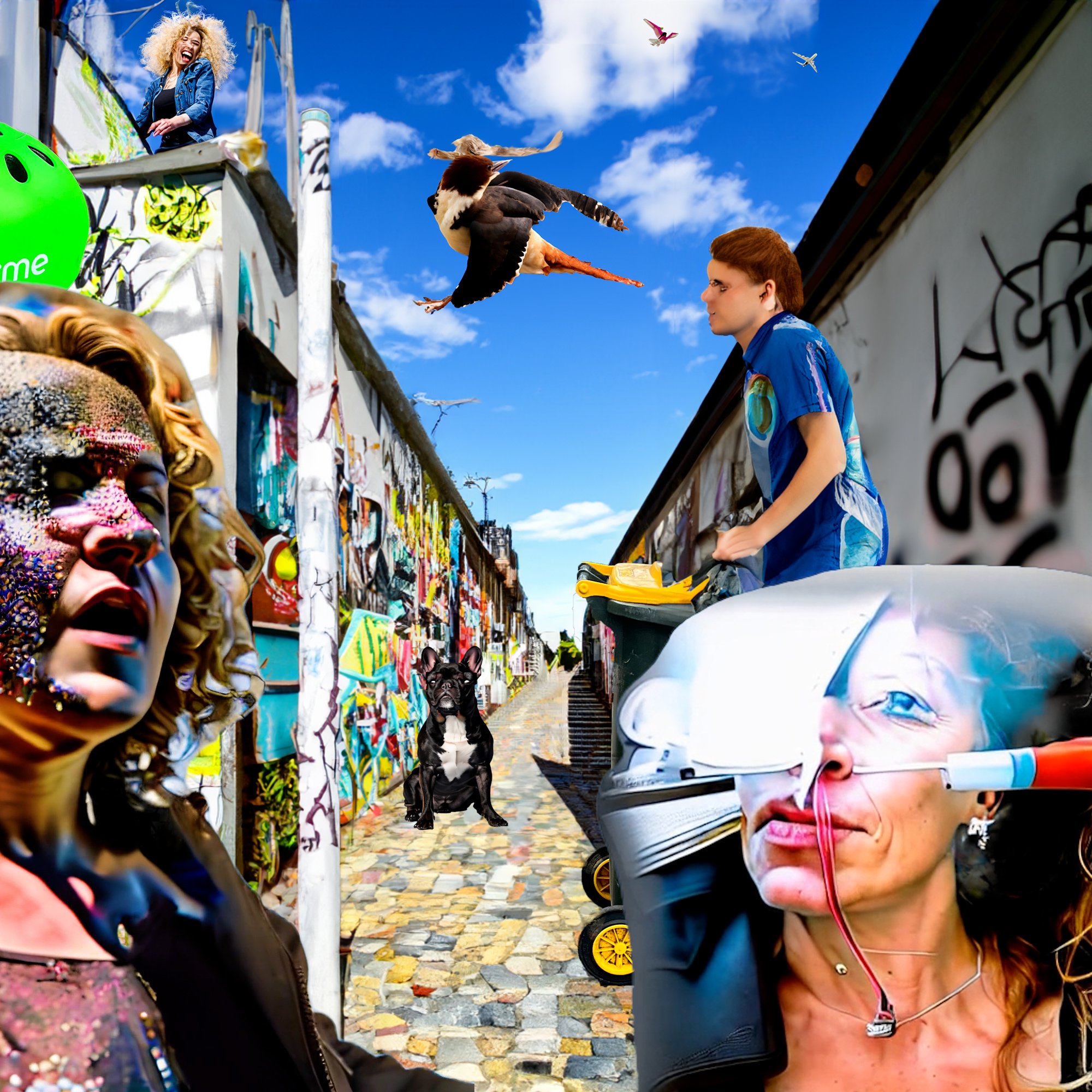
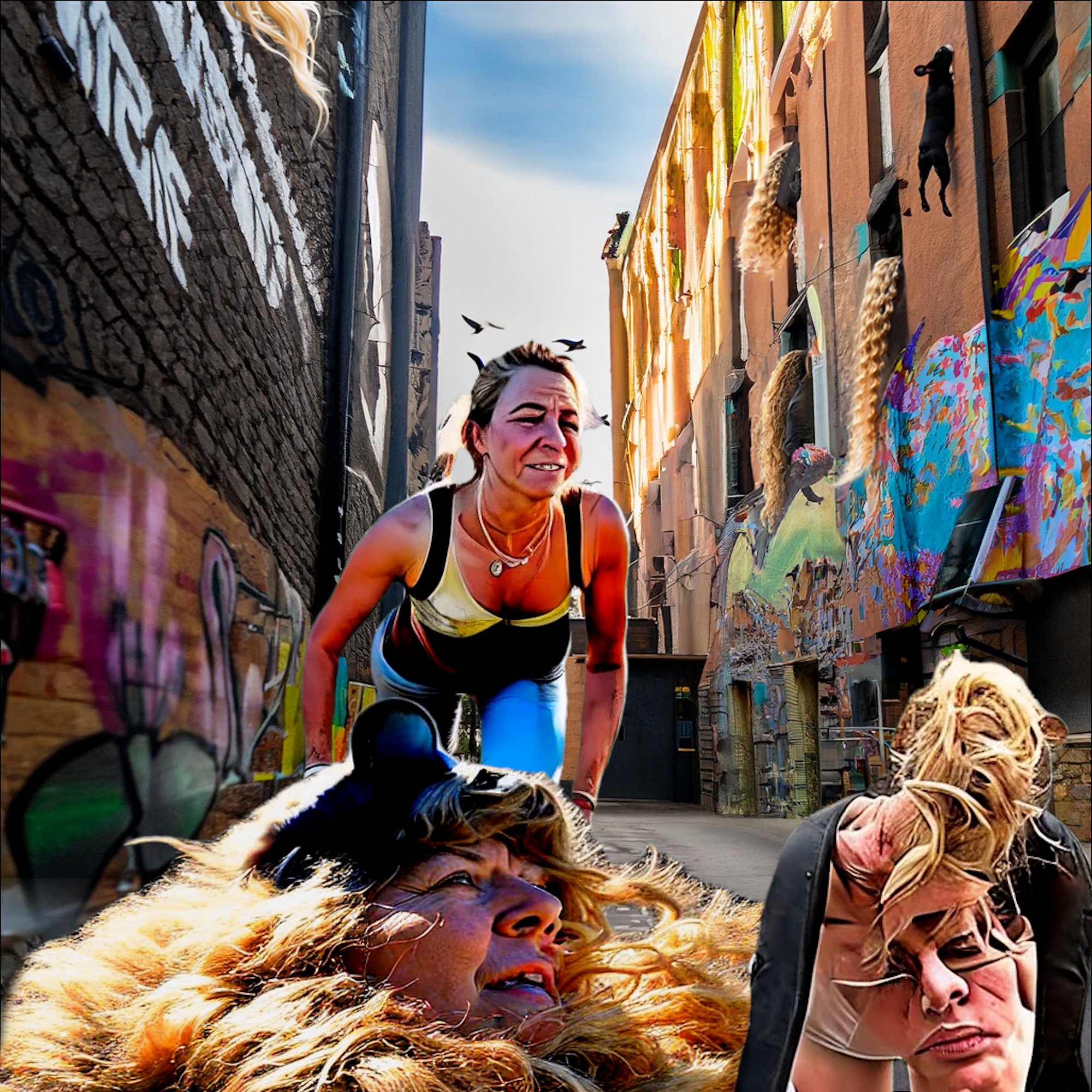

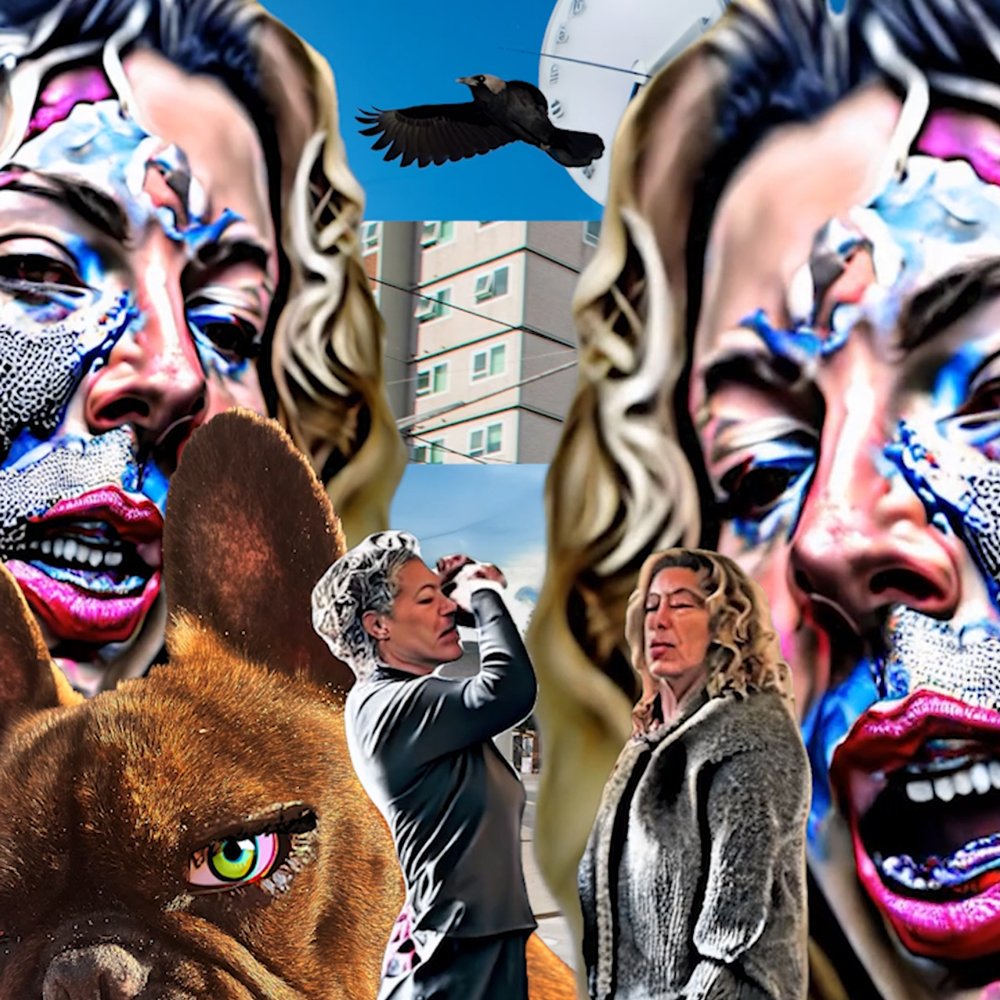
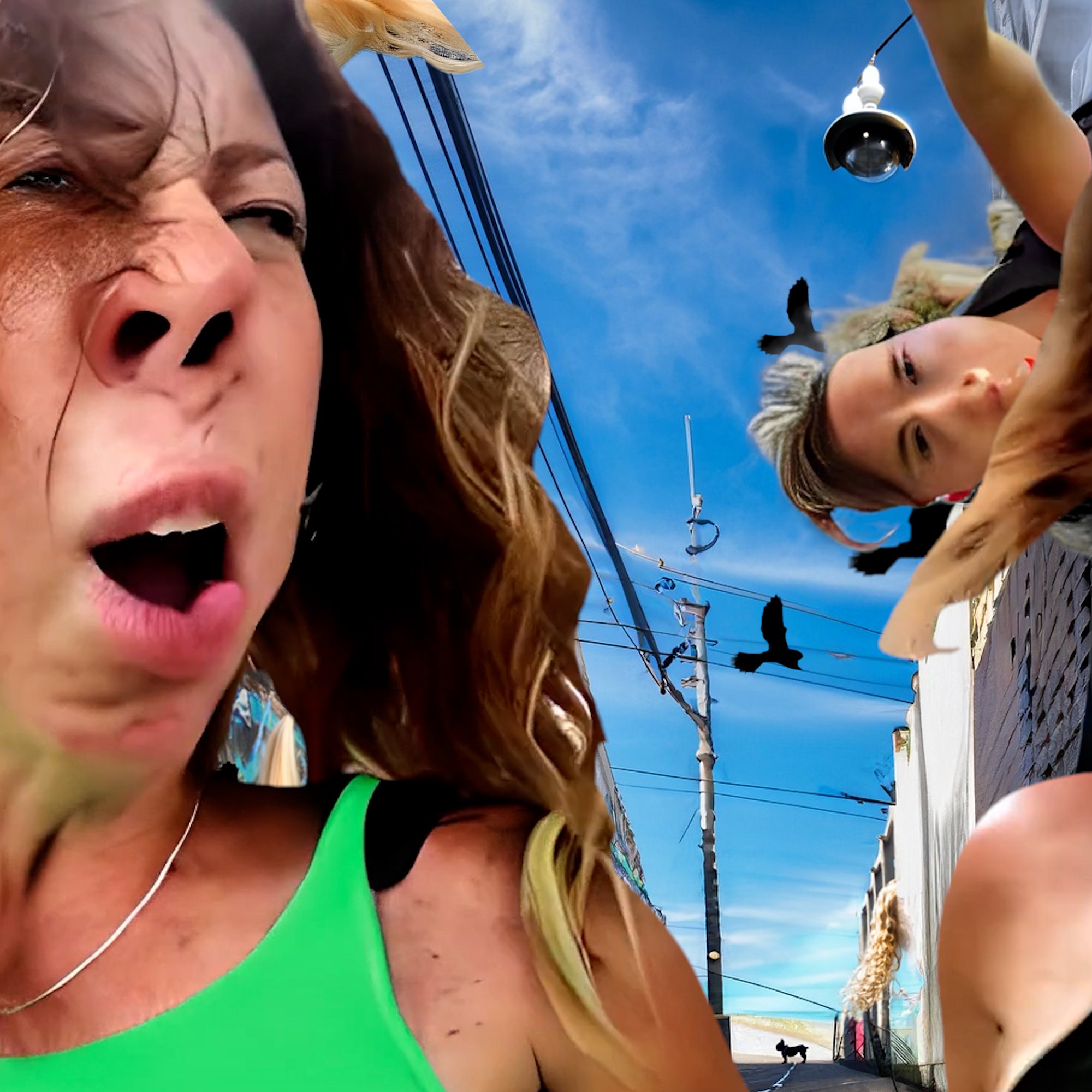
The ‘free’ world of online gaming is a farce willingly ‘bought into’ by gamers and social networking users, particularly virtual worlds. After 15 years online, one might imagine Second Life as a digital ghost town, but it remains a semi-popular virtual world with over 800,000 active users spending an estimated 336 million hours inworld in 2018 alone – perusing the almost $5 million virtual goods for sale on their marketplace.
Ain’t Free explores the carnival of empty capitalism and the desire to present the best self, best house, best imagined life through relentless purchasing and upgrading of skins, hair, bodies, apparel and homes. In the entrapment of the extended ego of the offline self - presented to an increasingly reducing online audience - the isolation of the never-ending loop of consumerism seems inescapable. Watch at Daata Editions
Happy endgame
Arcade game
Maiden in distress. Hypersexualised bimbo. Harrassed female gamer.
Bad ass.
Gun in hand, the protagonist in Happy End Game – a feminist first person shooter game – firmly returns the power to her female counterparts.
In the climate of gamergate, which saw feminist video game critics receiving rape and death threats (alongside having their home addresses published online) for questioning the position of female characters in video games, Georgie Roxby Smith has built her own game in which the lead female character has the opportunity to take down the “white male heroes” that dominate gender and race representation in the gaming industry.
All she needs to achieve her end game is to cross an abstracted gallery space populated with domestic appliances (reminiscent of art plinths) and reach her own arcade game. But can she do it and is her epic battle really the end or is the fight forward a perpetual one?
Happy Endgame sits resolutely within a body of work including The Fall Girl, Lara Croft Domestic Goddess, 99 Problems, Fair Game & the Peacekeeper series.
99 Problems [WASTED]
GTAV Online Intervention
Violence is claimed and turned on itself by the female protagonist in 99 Problems [WASTED] in a dualistic moment of empowerment and defeat.
The action of ‘playing to win’ is neutralised as she ritualistically performs and re-performs her own violent suicide in front of disinterested players and characters. At once, an unheard digital cry for help against a wall of self-absorbed in-game characters, a martyr action of feminist protest against the treatment of her fellow female characters in gaming history and a claiming of her own death prior to her inevitable violent murder. Ultimately her quest is a futile one, not only is her action unregistered and unheard, her reverse gaming against her own survival is redundant, as in all gaming, in dying there is an automatic digital rebirth. There is no purgatory online, she is destined to be eternally punished in a digital hell.
In repetition her hyper violence against self becomes hypnotic, darkly humorous and deeply disturbing.
Fair Game [RUN LIKE A GIRL]
GTAV Online Intervention
Grand Theft Auto is populated by stereotyped female bots, who – despite some initial attitude - screech and ‘run like a girl’ when bumped or touched by their male counterparts. These animations are designed by the game makers to be fleeting and momentary, a direct response to a single action of the player.
What happens if the player refuses to take no for an answer and pushes this intended moment to its maximum - is there an end point?
In Fair Game the player becomes the hunter, the bots the hunted as the artist stalks the women to their deaths in a live endurance performance.
The Fall Girl
Machinima, PS3 Skyrim
Placed as prop, non player, damsel in distress or sub-hero, the gaming female character is rarely a ‘player’ of any importance. Where female character heroes are in place, they are often overtly sexualized, such as the hyper real soft pornography of Lara Croft’s female form. The male gaze manifests itself bi-fold in an immersive environment populated by young men invested in hours of play and character’s own digital peers.The Fall Girl is a recreated death glitch which occurred whilst playing Skyrim. This death loop magnifies and distorts the violence against the female body and, in its relentlessness, begins to blur between the lines between intention - suicide, murder, accident or perpetual punishment. By removing the game play in between scenes, which when isolated are disturbing in their sharp focus, the viewer becomes critically aware of the hyper- representation of the character and the violence enacted against her. The protagonist is eternally and perpetually punished in an inescapable digital loop.
The Peacekeeper Series
Georgie Roxby Smith’s body of work, Peacekeeper (the title of which is taken from the latest gun available in the multiplayer game Call of Duty) explores the juxtaposition between reality and play and hyper masculinity and violence in virtual gaming and physical combat spaces through game interventions, installation, sound bytes and video collage.
Lara Croft Domestic Goddess
Georgie Roxby Smith’s hacked Lara Croft Tomb Raider video game shows the familiar icon for violent femme fatale bad-assery in the throes of orgasmic housekeeping, a scene that could be read as neo-Friedan, with her "domestic goddess" subject trapped between the banally physical and the extraordinarily virtual. While the medium is insistently technological, technology extrudes into the gallery space in a much more mundane and industrial sense, with the sculptural interjection of a washing machine as plinth, which also acts as an evocation of the sidelined, disenfranchised suburban female home warrior, who's vehicle of satisfaction (sitting astride the vibrating machinery) is ironically the same technology that might shackle her. The value judgments are unclear, the equation destabilized, as Croft joyfully irons shirts with a bow and arrow slung over her back, letting out cries that are undiscernibly battle grunts or orgiastic moans.
Jocelyn Miller, Assistant Curator, MoMA PS1, NYC
Uncomposed (after Titian, after Giorgione)
3D machinima, video, found image, found sound
Uncomposed (after Titian after Giogione) deconstructs Giorgione’s Sleeping Venus, itself a composite, the landscape and sky being completed by Titian following Giogione’s death in 1510. The work was a landmark of its era, reflecting a new shift in modern art with the inclusion of a female nude at its centre. Employing three-dimensional computer graphics and elements of Giorgione’s original masterpiece, Roxby Smith replaces his stylised renaissance figure with a fantasised digital body transplanted into an augmented hyper real landscape. In the likeness of her present day artist, the 21st Century Venus will not lie still for her voyeurs, obstinately returning the male gaze from her new digital paradigm, Sleeping Venus awakes. Soundtrack owco2_introspection by +
Hyperdentity
As a digital generation we seek instant gratification through constant communication across a multitude of platforms. The social networks of Facebook, YouTube, Twitter and other virtual worlds all provide outlets for us to reinvent the self through the screen. These networks are innately rich in social currency, and where there is social currency simultaneously there is a high value placed on identity and persona, resulting in a desire to create the perfect fantasised self. In the multilayered material space of the cyberworld our ‘avatars’ concurrently hide and reveal aspects of the inner. The lines between identity and role play continually blur as we construct our own reality performances in a perpetual process of cleverly editing the “I”. These multiple self-portraits can create the illusion of transcending the body as our hyper identities self-importantly exist everywhere at once, entertaining the cyber masses.
All it takes to disappear is a mouse click and we are left with an identity crisis of digital proportions.
Your Clothing is Still Downloading
In the virtual world of Second Life, where status is often accrued by having the best collection of sexually appealing avatars, desire and its ultimate physical endpoint, sex (or in this case cybersex), prevails. Cybersex is “more than role play it is the creation of a shared fantasy.” Avatars are hollow – avatars are pure, avatars are clean, avatars have no orifices. They do not leak, shit, sweat, rot – there is no inconvenience to their bodies. And if an avatar has no orifices then sex in Second Life is safer than in real life – the user is “freed from the burden of the body.” Many criticisms have been levelled at Second Life for its high number of sex, porn and exotic dance Sims. Contemporary art critic and curator Domenico Quaranta said of in world existence, “life revolves around the banal repetition of real-life rituals (having sex, going dancing, and attending parties, openings and conferences) and the same principles: private property, wealth and consumption.” As the promotional video for dedicated cybersex virtual world “The Red Light Center” attests, “Be who you want to be…without the hassle”. Cybersex or ‘getting off online’, in Second Life is a form of immersive role play – a mixed reality happening in that it more often than not, one could imagine, elicits physical action in its users offline.
Whilst filming the “sex-scene” for this work my mind flickered between the ridiculousness of two digital bodies’ glitching against each other and the surreal feeling that behind that bunch of pixels a real person is operating and text chatting or, somewhat disturbingly, perhaps even masturbating. In the end I created two avatars – one my own and one an idealised male – and operated them both simultaneously using two computers to create the desired film output for projection. It was quite fitting as in the end, playing dolls, are we not just virtually fucking ourselves anyway? Can we really create intimacy in these new manufactured spaces?
iObject
iObject explores the Georgie Roxby Smith’s digital identity through the negation of self in a virtual world. By completely voiding her idealised self portrait avatar of all identifiable features and symbols of desire and ego, the artist challenges the position of identity in this hyper real world.
Roxby Smith’s avatar staged a number of sit ins as a three dimensional shadow in the consumer, social and sexual constructions of Second Life – provoking reactions of scorn, threat and complete disregard by observing avatars. Silent in her commodified surroundings, the death of her virtual ego is underscored by the evocative sounds of a Buddhist chant – creating a blur between an act of holiness or menace.
REALITY BYTES
“The work of Australian artist Georgie Roxby Smith challenges the relationship between analog and digital systems, questions materiality and explores new possibilities of virtual reality software. In Reality Bytes, she extracts and re-injects her Second Life avatar into physical space so that her work exists on a kaleidoscope of planes: “in world,” within a body of physical sculptures, as ephemeral projections in space; and as recreated performances by both humans and avatars. The effect is that of a hall of mirrors, in which viewers occupy multiple realities at once.”
Two week residency to develop mixed reality work Reality Bytes with virtual inworld and IRL performances with multiple IRL and virtual entry points breaking down the “fourth wall of the theatre”. 2010
/<EXQUISITE CORPSE> DEAD DADDY
Second Life machinima, RL photos, horizontal projection
av-a-tar/ Noun: A manifestation of a deity in bodily form on earth An incarnation, embodiment, or manifestation of a person In computing, an avatar is the graphical representation of the user Merging rephotographed real life images and virtual footage of a 3D Second Life avatar intimately built in my father's image, this 21st Century 'exquisite corpse' explores death, memory, loss and the materiality of the body. Reminiscent of a children's game, where flipcards are shuffled to create a random visual effect, these flickering images reflect the processes of the human memory playing out emotions of grief and yearning. Through a conglomeration of pixels he once again moves, interacts, smiles, weeps. Like the avatars themselves though, these experiences are hollow, like some sad puppet trapped between worlds and realities. At once humorous and horrific. Extracted from his Second Life, he lies trapped as the exquisite corpse, fragmented in both body and medium. Mixed in with rephotographed real life images an expanded neo portrait is revealed.
Selection of older works
Dystopian Glitch interactive scultpure
Michael & Me, machinima performance/video SL
<end game> interactive sculpture
Suck My Pixel Machinima Performance video
You Never Know When You’re Gunna Have to Blackmail a ** MMS to postcard series

